Friday, June 29, 2018
Best web hosting resellers of 2018
Cheap VPS hosting deals
Thursday, June 28, 2018
Does Facebook know when you'll die?
Facebook holds a huge amount of your personal data - perhaps even enough to tell when you'll get married, have children and die.
To find out how much the site can extrapolate about its users' lives, the New York Times plunged into the hundreds of patent applications Facebook has filed since it went public in 2012.
One of its most alarming - and fascinating - discoveries was the patent Predicting Life Changes of Members of a Social Networking System, which would use your recent online activity to forecast major personal events.
According to the patent, "A life change event, for example, may be a change in marital status, a birthday, a new job, a birth of a child, a graduation, or a death of a person associated with the user, just to name a few."
The patent refers to communication data, including wall posts, instant messages and text messages, which could be scanned for key words indicating that something big is about to happen in your life.
The circle of ads
This information could then be used to target advertising more effectively. For example, if the algorithm determined that you were about to become a parent, it could shower you with ads for nurseries and diapers.
Although Facebook users update their profile when something important happens, like an engagement or a marriage, it's not very helpful to advertisers if that happens after the event has taken place. There's no point trying to sell a wedding dress to a woman who's already on her honeymoon.
Although the potential might be there, a patent isn't the same as a plan, and few of the documents the NYT pored over have borne fruit.
“Most of the technology outlined in these patents has not been included in any of our products, and never will be,” Allen Lo, a Facebook vice president and deputy general counsel, and the company’s head of intellectual property, told the newspaper.
Still, it's a poignant reminder to take a look at your privacy settings if you haven't done so recently, and make sure you aren't sharing any more data than you want to with the site and its advertisers.
from TechRadar - Internet news https://ift.tt/2KpwaUS
via IFTTT
Wednesday, June 27, 2018
10 free online cybersecurity courses you should take
Knowledge is power, but it’s also expensive. In a day and age where it’s essentially required that everyone have a college education, you have to be able to either afford the experience or the coursework.
Of course, time is money and if you have any to spare, it’s oftentimes just as valuable to certain course administrators.
A quick Google search will tell you that there are thousands of cybersecurity classes that you can take online for free. While that may be the case, however, there are only a handful that you should take, and we’ve picked out 10 resources that provide complimentary education to all the aspiring Kasperskys out there.
- Check out our list of the best VPN services in the world
These lessons vary in their levels of formality and professionalism. The US Department of Homeland Security’s Cybersecurity official training and exercises, for instance, are bound to be rather more dense than, say, Udemy’s level-one cybersecurity course for beginners (see slide 5).
Nevertheless, the end goal remains the same: learning more about the digital defense protocols of the modern era in an attempt to surpass college students shelling out more than they need to for their academic redundancies.
Some of the options you’ll find here can lead to paid formal education opportunities, whereas others are completely free introductions to the world of cybersecurity. Without further ado, let’s take a closer look at some of the choices.
It’s undeniably basic, and yet Sans Cyber Aces isn't far off the mark when it says that it offers the best free online cybersecurity classes on the web.
After reading through a series of comprehensive entries about operating systems, networking and system administration, you can register for a quiz that puts your expertise to the test. Should highlighted talking points such as installing Linux virtual machine software or basic PHP, Bash and PowerShell web scripting pique your interest, you’ll be in for an engaging lecture.
As the name suggests, Cybrary is an online library for cybersecurity, IT and other InfoSec-related study materials. After creating a free account, you get access to almost 500 courses, each ranked by their difficulty and all of them free.
You can filter classes by level – Beginner, Intermediate and Advanced – or by vendors like Cisco, (ISC)2 and Microsoft. Whether you want to learn the fundamentals of malware or the art of the Jedi mind trick, both of those curriculums are given equal prominence in Cybrary’s extensive course catalog.
The US Department of Homeland Security is an obvious source of cybersecurity expertise, but you may not have been aware that you don’t have to travel all the way to the United States to benefit from the vast experience of US government security experts, or that you can do so for free.
The DHS has a calendar full of training events you can attend in Idaho Falls, but for everyone who doesn’t live in the midwestern US there’s an entire portal of online courses available to those involved in the security of industrial control systems.
Its website looks like what you'd get if you took all the slideshows and teaching materials from a university cybersecurity department and uploaded them to a domain sporting the most minimalist user interface of all time, but Open Security Training is host to a range of intermediate and advanced classes, along with a swath of beginner lessons that any newbie would be a fool to pass up.
There’s a whole rundown on the x86 and x64 architectures wielded by Intel processors, along with introductions to topics along the lines of cellular security, network forensics and vulnerability assessment.
Typically, courses on Udemy cost money, but we’ve found a few worth checking out that won’t put a dent in your bank account. There’s a Cybersecurity law primer, for example, that we think could be beneficial to anyone wanting to know the ins and outs of cybersecurity ethics. The Cybersecurity course for beginners – level one could also be advantageous to take, not only for cybersecurity enthusiasts but for anyone who want to learn more about the subject.
The Introduction to Cyber Security course from Future Learn, owned by the UK-based Open University, is available to take at any time on any schedule, and is accredited by UK Government intelligence organization GCHQ, global accreditation and examination institute APMG International, and The Institute of Information Security Professionals.
Future Learn also offers a free three-week online course called Cyber Security: Safety at Home, Online, in Life, designed to teach the essentials of maintaining security and privacy online and at home.
It’s not exactly a class or an educational institute, at least by conventional standards. What The Daily Security Tip is, though, is an email-based learning tool produced by Heimdal Security that sends you a nugget of cybersecurity-related advice every day, with the ultimate goal of making you safer both online and off.
It’s completely free to sign up, and the creators of The Daily Security Tip claim that “there’s a 96% chance you’ll enjoy it”.
From the same firm that brought you The Daily Security tip comes Heimdal Security’s Cyber Security Course for Beginners. Although this, too, is email-based, its syllabus is significantly more extensive than that of The Daily Security Tip.
The Cyber Security Course for Beginners delivers a new lesson every two days for five weeks, and all without the need to pay back any tuition loans. In terms of content, it aims to give you step-by-step advice for keeping your personal data out of nefarious hands.
More of a free trial than a free class, Coursera’s cybersecurity specialization was created by the University of Maryland to bring the underlying concepts of the construction of secure systems directly to your web browser.
It consists of five courses in total, each of which can take several weeks to complete. These range from Usable Security to a Cybersecurity Capstone Project, so it’s safe to say that they'll require you to already have some intermediate cybersecurity know-how under your belt.
Massive Open Online Course (MOOC) is a hot buzzword these days. A MOOC is a university-taught class that's completely free of charge to anyone with the free time to spare, and there are a lot of cybersecurity MOOCs to choose from, from a wide variety of schools.
Notably, Excelsior College has an introduction to cybersecurity class that lasts eight weeks and is suitable for both educators and professionals. Elsewhere, Cornell University has a MOOC called Privacy and Surveillance In the Age of Interconnection, studies the evolution of privacy concerns and user rights.
from TechRadar - Internet news https://ift.tt/2p5ZqDE
via IFTTT
Tuesday, June 26, 2018
Monday, June 25, 2018
Why big data could mean you never miss a train again
What projects are you and Trainline’s data science team currently working on?
We work with vast quantities of travel data (127,000 journeys are taken by our customers every day) to enhance the travel experience with new, smart innovations. These innovations are designed to help customers in many ways, from saving them money to helping them find the best ticket for their journey in a quick and easy way.
One of the projects my team has been working on recently is enhanced disruption notifications for our customers. Soon to launch in beta in our voice app, enhanced disruption notifications use machine learning and natural language processing to ‘read’ the rail operators’ Twitter feeds, analyse them and share relevant contextual journey updates matched to the individual traveller. It’s a first for the rail industry in the UK and we’re really excited to launch it.
'Big Data’ has become a buzzword, but what does it mean to you?
The tech industry is no stranger to buzzwords, but it sometimes needs to do a better job of explaining them. I think when we talk of ‘big data’ a lot of people simply imagine huge spreadsheets, a lot of numbers, or simply don’t know what it refers to at all.
‘Big data’ is slightly misleading in that it suggests only volume is involved. Early definitions suggested big data refers to three Vs: ‘Volume, Velocity and Variety’. That definition is over a decade old but it remains useful in some respects. The speed at which data is gathered, where it’s being stored and for how long, as well as the variety of the data – the different sources it comes from, its uniformity or lack of - these traits and facets all play a part in ‘big’ data.
Ultimately, as data science becomes ingrained in every industry, we need to keep people educated on what it is, rather than use it as a catch-all phrase that does little to explain the work behind it.

How does big-data or artificial intelligence apply to the travel industry?
The rail and coach industry is a very interesting space to be working in data science. With rail, we have a centuries-old system, fundamental to our daily lives, that we are working to modernise. Recent innovations, such as the introduction of mobile tickets, which we’re working closely with the rail industry to roll out nationwide, have revolutionised the travel experience.
Now we’re focused on enhancing the customer experience even more through cutting-edge tech. For example, we recently launched a voice app, built for the Google Assistant, which operates at 12+ levels of conversation depth. It’s designed to make journeys even smarter and easier, helping customers enquire about their journey hands-free, whether at home or on the go.
What distinguishes the work you are doing at Trainline from other travel apps?
We are Europe’s leading rail and coach app. We work with 181 rail and coach companies and we sell tickets to customers in 173 countries. We’re completely committed to using our tech expertise to create an experience that hugely benefits every customer. For example, we recently launched the UK’s first predictive pricing AI for rail tickets, which predicts when Advance fares are likely to increase. Since launching Price Prediction, over 2 million customers have engaged with the AI, resulting in a total saving of nearly £9 million.
What has gone well over the last year, and what has proved challenging?
We’ve continued to grow our team – it’s now made up of almost 50 people with incredible talent. This means we have enhanced capabilities to work on even more exciting projects in the coming weeks and months.
As with any team that’s moving at pace and growing rapidly, there has been a learning curve - for me in particular. I’ve had to adapt how I work with the team to keep the pace while making sure everyone’s talents are being used effectively and that each member of the team is given the space to grow.
- It's not just trains - big data has also predicted who will win the World Cup 2018!
How do you think the travel industry could improve its relationship with technology?
Every industry is becoming inseparable from tech and travel is no exception. Travel operators and tech companies, such as Trainline, need to work closely with one another to set industry standards that can future-proof the needs of our customers. A big part of this, especially in rail, is implementing international data standards to ensure that as more and more geographies are brought together by tech platforms, one seamless, global experience is offered to the customer.
In your opinion, what will be the next big breakthrough for data science?
It’s likely we’ll see a series of smaller steps, where the whole is greater than the sum of its parts, rather than a giant leap when it comes to data science. It will result in apps that can analyse even greater amounts of data and present them in a straightforward way at increasing speed.
A little further down the line we could see a tipping point, when machine learning and AI advances to a level at which it is learning of its own accord with minimal human management – but it’s still uncertain just when such an advance will take place.
For now, I see data science’s role as answering the little, but important every day questions - those that require a tremendous amount of data to answer but have a big impact on the quality of our daily life – questions like, “Which train should I take?”.
Fergus Weldon is director of data science at Trainline
from TechRadar - Internet news https://ift.tt/2Ka0eEE
via IFTTT
Get giga-fast WiFi speeds with the devolo GigaGate network booster
There are few things as vital as air to breathe, water to drink and food to eat. But, today, if you want to enjoy the groundbreaking benefits of the hyperconnected world we now live in, you can count a reliable, high-speed internet connection alongside those everyday necessities.
But too often something gets in the way. How many times have you sat down to enjoy an episode of your favourite show, only to find your broadband isn’t fast enough to pull down the frames, or moved to work in a quiet corner of the house to be thwarted by a signal that just can’t penetrate the walls of your home?

Devolo’s GigaGate kit aims to fix that. Whether you’re downloading the latest battle royale video game or simply surfing the web, the GigaGate with its WiFi bridging tech ensure you get the fastest speeds and most reliable connection wherever you are in the house.
Plug-and-play mesh comfort
It’s as easy to set up as it is to enjoy. A base unit plugs into the wall and hooks up to your regular router. This then connects wirelessly to a satellite unit which plugs into the wall in the room where your connectivity is proving problematic, boosting the signal so that you’re getting exactly the speeds you deserve.
With five multimedia ports per satellite for plugging in games consoles, streaming devices and Hi-Fi kit, and with the WiFi bridge supporting eight simultaneous satellite units to run alongside the GigaGate base station, you’ll be looking at maximum speeds of 2Gbps in every room of the house. With plug and play simplicity, you’ll have a high-speed WiFi mesh network wherever and whenever you need it most.
Click here for more on the devolo GigaGate starter kit, and head over to Amazon to pick one up for yourself and unleash super-fast broadband around your home.
from TechRadar - Internet news https://ift.tt/2trXb0i
via IFTTT
Saturday, June 23, 2018
Facebook wants to tell you how much time you're wasting on Facebook
Tech companies are apparently a lot more interested in our digital well-being these days, with both Android P and iOS 12 showing off features that tell you how much time you're spending glued to your smartphone's screen. Now it would appear that Facebook is getting in on the act too.
TechCrunch discovered a page hidden away in the Facebook app for Android called "Your Time on Facebook" – as the name suggests, it tells you how much time you're spending each day scrolling through updates from your friends.
There's also the option to set daily usage reminders, so if you don't want to use up too many hours liking and commenting, Facebook will step in with an alert. Again, this is similar to the app time limit features that Apple and Google are readying for the updates to their mobile OSes later in the year.
There's an app for that
Facebook confirmed to TechCrunch that it is working on the feature, but there's no guarantee it will ever appear to users – Facebook likes to experiment with changes and tweaks to its apps, but if they don't sit well with the people testing them out, they can quickly get removed from the roadmap.
The timing would certainly be right if Facebook did introduce something like this. Instagram, which is of course owned by Facebook, is also busy working on a similar feature to highlight just how much scrolling and liking you're doing.
Ultimately the likes of Apple, Google and Facebook want you using their products as much as possible – but they also want that time to be enjoyable and positive. If you're not getting anything good back from your apps, that's a problem for everyone.
from TechRadar - Internet news https://ift.tt/2lvFF72
via IFTTT
Friday, June 22, 2018
Best shared web hosting of 2018
Best cloud mining providers of 2018
Cloud mining is the process of buying CPU power from dedicated data centers who use their own equipment to mine cryptocurrencies such as Bitcoin (BTC) on your behalf.
The main advantage of this approach is that you don't need to have in-depth knowledge of mining hardware, nor buy expensive and hard-to-obtain devices. Renting 'hash power' (usually measured in Gigahertz per second or GH/s) also means you don't have to deal with the heat and noise that comes with a DIY mining project.
Many of these companies either source their own equipment or build it cheaply and have placed their data centers in countries like Iceland and China where electricity is cheap, passing the savings on to you.
In this guide, we will explore five of the most reputable cloud mining companies. As there are many scam outfits posing as miners, where possible we've chosen cloud miners who can prove that their data centers exist or are endorsed by a reputable firm. Take some time to do your own research before investing at your own risk, of course – ultimately this is your money.
If you are interested in cryptocurrencies but don't feel happy with the idea of mining, you can also simply purchase Bitcoin as an investment (see our guide on how to buy Bitcoins with Bitstamp). Without further ado, let’s move on to our selections for the best cloud mining providers.
- We also show you how to mine Bitcoins

As one of the oldest (it dates back to 2013) and largest cloud mining centers, there seems to be no better place to begin than with Genesis.
Its website offers a live feed of some of the data centers which are based in Iceland, a country where cheap geothermal electricity is readily available.
Mining contracts are technically available for all major cryptocurrencies and you can visit your online dashboard at any time to reallocate your purchased 'hash power' (so, for example, you could go 60% Bitcoin and 40% Litecoin).
In terms of fees, Genesis currently charges $0.14 per TH/s per day for mining Bitcoin. The price of other cryptocurrencies may vary so we encourage you to make your own enquiries. The website has a Payouts section which you can use to monitor how much you've mined. Due to high transaction fees on the network, your mined coins may need to meet a minimum threshold before the funds are actually transferred to your wallet.
The simple interface combined with Genesis Mining's solid reputation has meant that at times the company cannot keep up with demand for mining contracts (which tells a story of its own). At the time of writing only Bitcoin mining contracts were available for purchase, although this will likely change later in the year.

Hashnest was launched in 2014 by Bitmain, which is a world-renowned manufacturer of ASIC mining hardware. Bitmain also operates one of the largest mining pools in existence: Antpool. Combined with the photos of a handful of data centers on the Hashnest website, this is persuasive proof that the company is legitimate.
While Bitmain is based primarily in China, Hashnest has mining farms around the world, which benefit from low cost electricity.
The website currently offers a Payout Accelerated Cloud Mining Contract or PACMiC for short. The PACMiC is a type of electronic contract structured in such a way that Bitmain pays the maintenance costs of mining rigs (such as electricity), and all the mining revenue will be used to pay back the owner of the PACMiC. When the principal is not fully paid back, it will share profit with buyers.
This loosely translates as 6.0TH/s of hash power in exchange for 1 BTC. Hashnest claims this results in rolling profit pay-outs for each block found with an annualized ROI of over 14%.
Alternatively you can purchase hash power directly from Antminer devices such as the S9 which has a rate of around 12,5TH/s. You then pay a fixed maintenance fee depending on the efficiency of the device – for instance, the fee for the S9 is currently $0.19/TH/day.
Contracts for the Antminer devices are currently sold out but you can still buy a PACMiC contract if you have the funds.
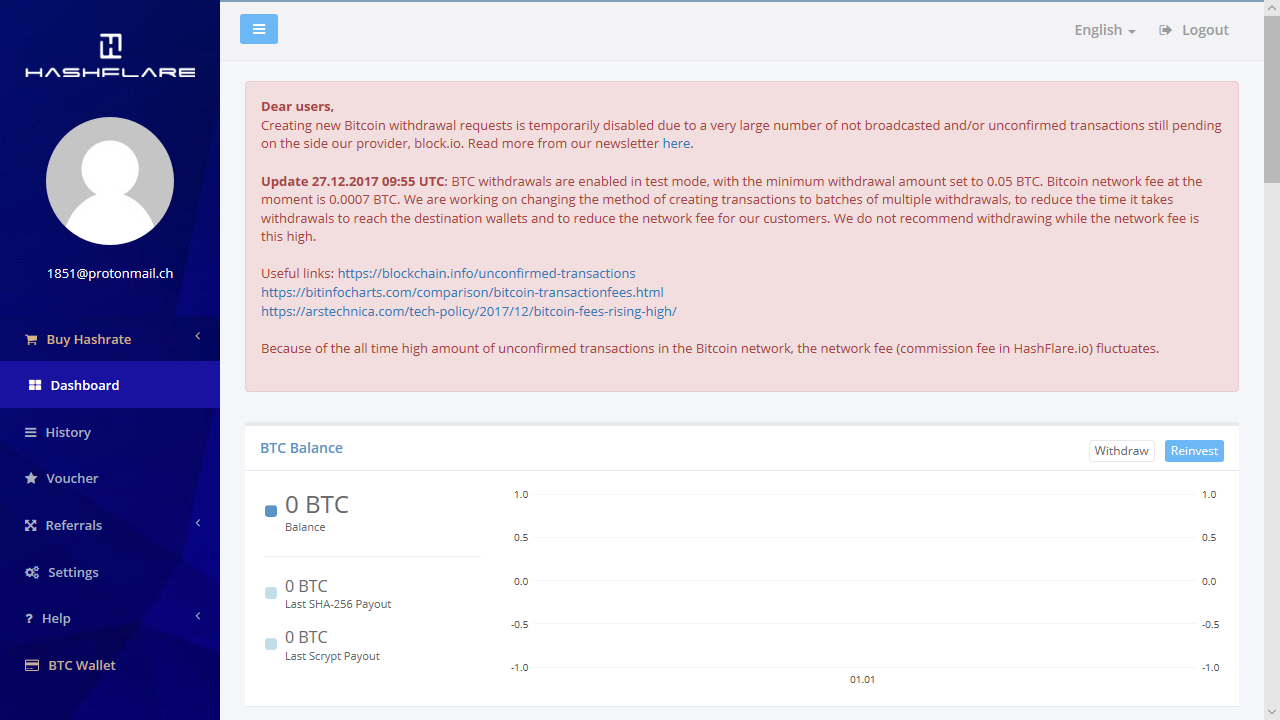
Hashflare is a subsidiary of Hashcoins, another manufacturer of Bitcoin mining equipment which has been around since 2013. Its website gives a detailed rundown of the firm’s data center including pictures.
Hashflare offers you the chance to purchase hashpower for a variety of SHA-256 and Scrypt coins such as Bitcoin and Litecoin as well as Ethereum and ZCash. You're also free to choose your own mining pool.
Hashflare is open about its maintenance fees: they are $0.0035 for every 10 GH/s of SHA-256 coins and $0.005 for every 1 MH/s of Scrypt coins a day. Ethereum contracts are not subject to any maintenance fees. Your total pay-out will depend on the mining pool you've chosen and how much hash power you've allocated to it.
At the time of writing, only Ethereum mining contract was available, all others were out of stock.
As of January 2018, Hashflare has also temporarily suspended new Bitcoin withdrawals due to a large number of unconfirmed transactions. The company plans to resume withdrawals once this is resolved.
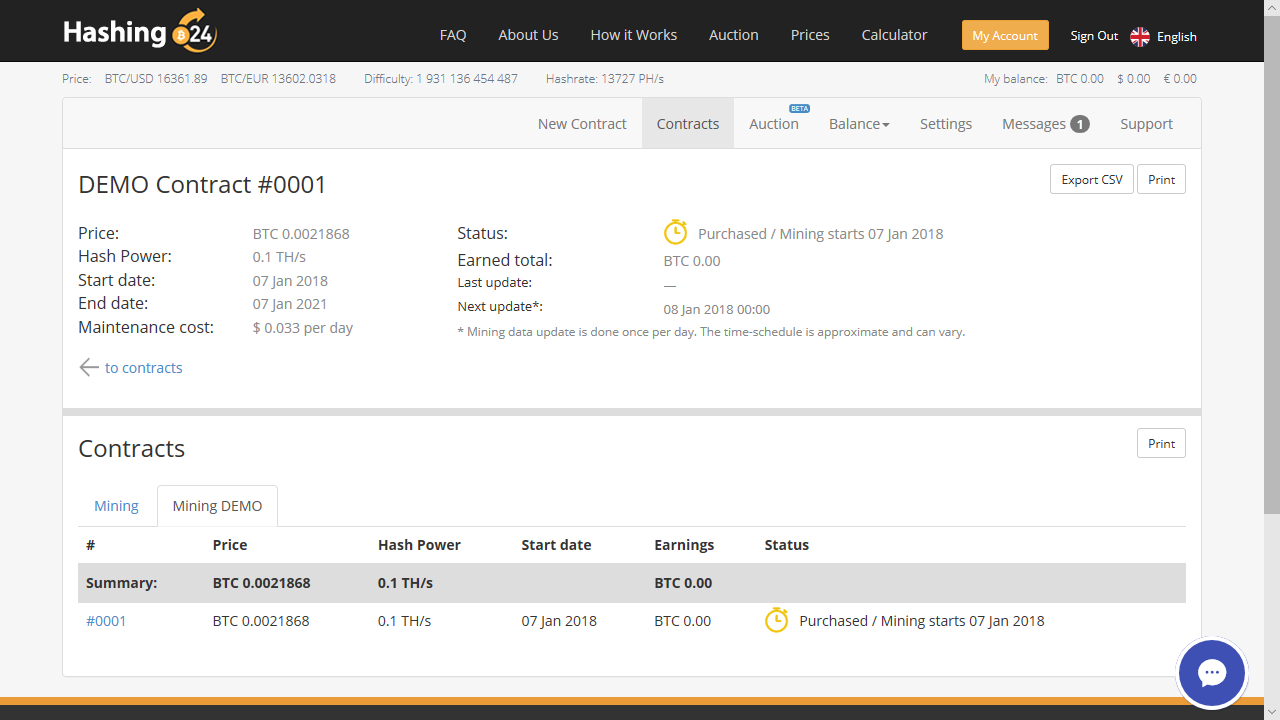
The Hashing24 team claims to have been involved in Bitcoin mining since 2012, although the website itself has only been around since 2016. The company appears to have no data centers of its own, rather, it has partnered with big name providers such as BitFury to lease hashpower to customers. Note that Hashing24 is mentioned on Bitfury's website, which may reassure customers that the operation is real.
If you're new to cloud mining, you can also use Hashing24's demo mode to simulate a Bitcoin mining contract to see how much you might earn. This is a good way to help you understand some of the concepts behind cloud mining, but won't necessarily let you project future profits, as mining difficulty and BTC price will vary over time (naturally).
After registering you can currently sign up for Bitcoin mining contracts only, for a period of 36 months. If these are sold out (as they were at the time of writing) you can also try out Hashing24's auction feature which allows you to bid on hashpower from existing customers.
Regardless of how you purchase your mining contract, Hashing24 charges a flat fee of $0.00033 per GH/s per day. There's also a one-time fee for purchasing hashing power with a particular host.
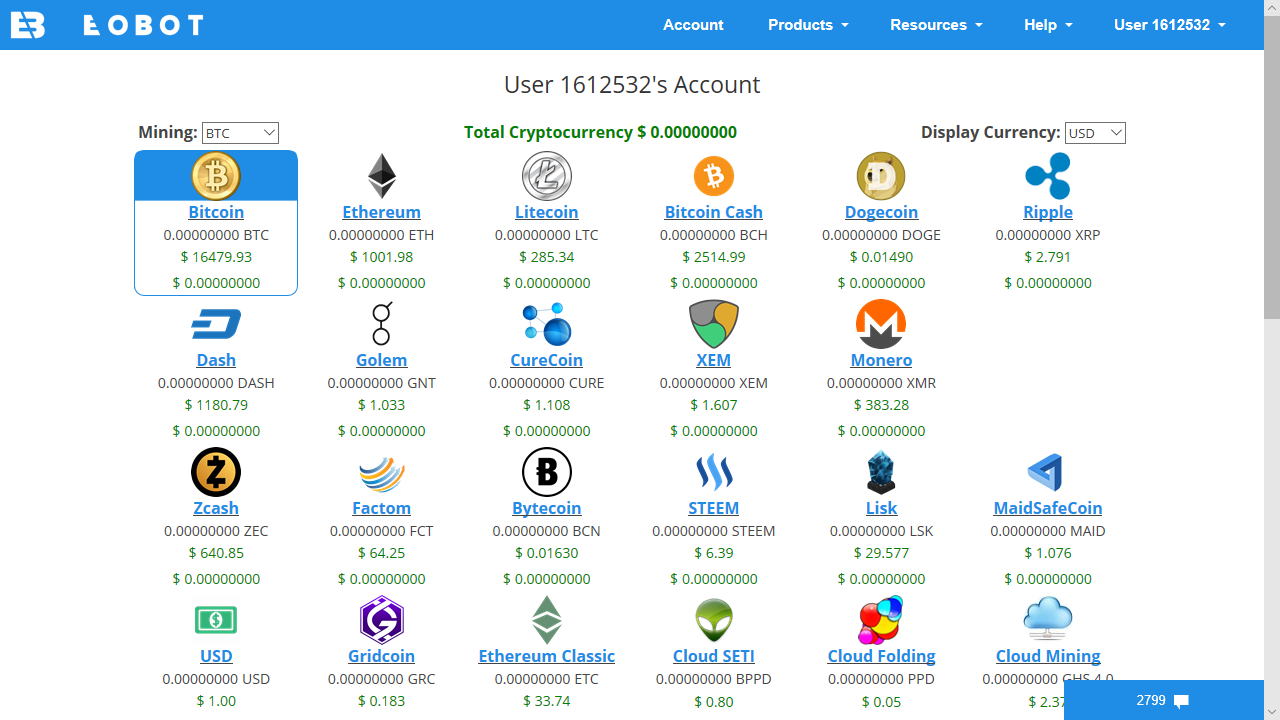
Eobot has been around since 2013 and is registered in California. Its owners have decided to remain anonymous, so there are no photos or office addresses on the main website.
Eobot's site did not play nicely with our ad-blocker on registration, forcing us to use another browser. However, once sign up was complete, we saw that the website notifies users when someone logs into their account from a new IP address. Two-factor authentication is also enabled by default, meaning that in order to access your account, you need to provide a code sent by email as well as your password.
Eobot offers mining contracts either for 24 hours or five years. The website is neatly laid out and also offers a fee estimator to allow you to calculate daily profits in exchange for the hashpower you purchase. Its main page is very clear that most investments will take around 52 months to break even.
Maintenance fees are currently set at $0.00021/GH/s/day. Unlike other cloud mining websites we've reviewed, Eobot also offers an easy to understand explanation of how maintenance fees work. Contracts are available for a wide range of cryptocurrencies.
Due to the owner's desire for anonymity and in order to stay within the law, direct deposit of funds by bank transfer isn't supported. You can, however, buy contracts with Bitcoin and via a USD credit card using Epay.
Top image credit: Hashing24
- We’ve also picked out the best graphics cards for mining Bitcoin, Ethereum and more
- These are the best VPN services we've identified
from TechRadar - Internet news https://ift.tt/2EuF6BN
via IFTTT
YouTube creators can now jazz up live streams with pre-recorded video snippets
YouTube has announced a bundle of new tools for creators, including the ability to combine live streaming with pre-recorded video.
The new tool, called Premieres, means creators can multitask during broadcasts – answering live questions while playing a recorded clip, for example. Premieres will roll out over the next two weeks, starting with users in its beta testing program.
The site is also launching channel memberships as a way for creators to earn extra cash from their clips. Viewers can sponsor their favorite channels for a monthly fee of US$4.99 (about £4, AU$7). In return, they'll receive custom emoji and badges, plus the warm, fuzzy feeling that comes from supporting the content they enjoy.
There are new merchandise opportunities as well. Creators with over 100,000 subscribers can design goodies like T-shirts and mugs on Teespring and have them advertized on a virtual shelf under their videos. Many YouTube stars already supplement their income with merch sales, but until now they've had to direct their fans to a storefront on a different site.
Premium plans
YouTube announced the new tools at its annual VidCon event in Anaheim, California, which kicked off yesterday shortly after the global launch of YouTube Premium and YouTube Music.
The site is clearly keen to show that it's taking content seriously – and for good reason. The site has faced fierce criticism this year for unsavory videos appearing on YouTube Kids, and its slow response when star vlogger Logan Paul shared footage of a suicide victim with his millions of (mostly young) subscribers.
YouTube's competitors are also nipping at its heels. Instagram's move into long-form video, IGTV, lets regular users share videos up to 10 minutes in length, while social media celebrities can keep their cameras rolling for up to an hour.
- Get your clips looking great with the best free video editing software
Via The Verge
from TechRadar - Internet news https://ift.tt/2lvGBZb
via IFTTT
Thursday, June 21, 2018
Best free image hosting websites 2018 for photos and videos
Ubiquitous cloud computing and the advent of smartphones with superb connectivity and compact-beating cameras have turned us into trigger-happy snappers and eager uploaders.
While Facebook remains the top destination for pictures, other image hosting websites (free or paid) have mushroomed in popularity as folks look for a safe abode for photos that have a serious propensity to be shared and potentially go viral.
When it comes to sussing out the best online home for your pics and vids, you will want to check out where these services are based, and whether or not they require registration. You’ll also need to consider other features: storage space, file size limits, file support, how easy it is to upload pictures, platforms supported, and whether there’s capacity for direct linking, image galleries, editing capabilities and more.
Note that image hosting websites are fundamentally different from online photo printing or backup services – the latter are used primarily to keep a copy of pictures online, with sharing being a minor consideration. At any rate, let’s take a look at some of our favorite free image hosting websites.
Best free image hosting websites in 2018

Imgur is by far the biggest image hosting website in the world (and one of the top 50 online properties). You don’t have to register to use it and everything is pretty much unlimited with three exceptions: you’re limited to uploading up to 50 pictures per IP address per hour, the maximum file size for non-animated images is 20MB, and 200MB for GIFs.
Files are kept online forever but just be aware that the service does apply lossy compression to non-animated images over 1MB (for anonymous uploads) and 5MB (for account holders). So don’t use this as an online backup service for your pictures. There are also a plethora of tools available either produced by Imgur or members of the very active user community.

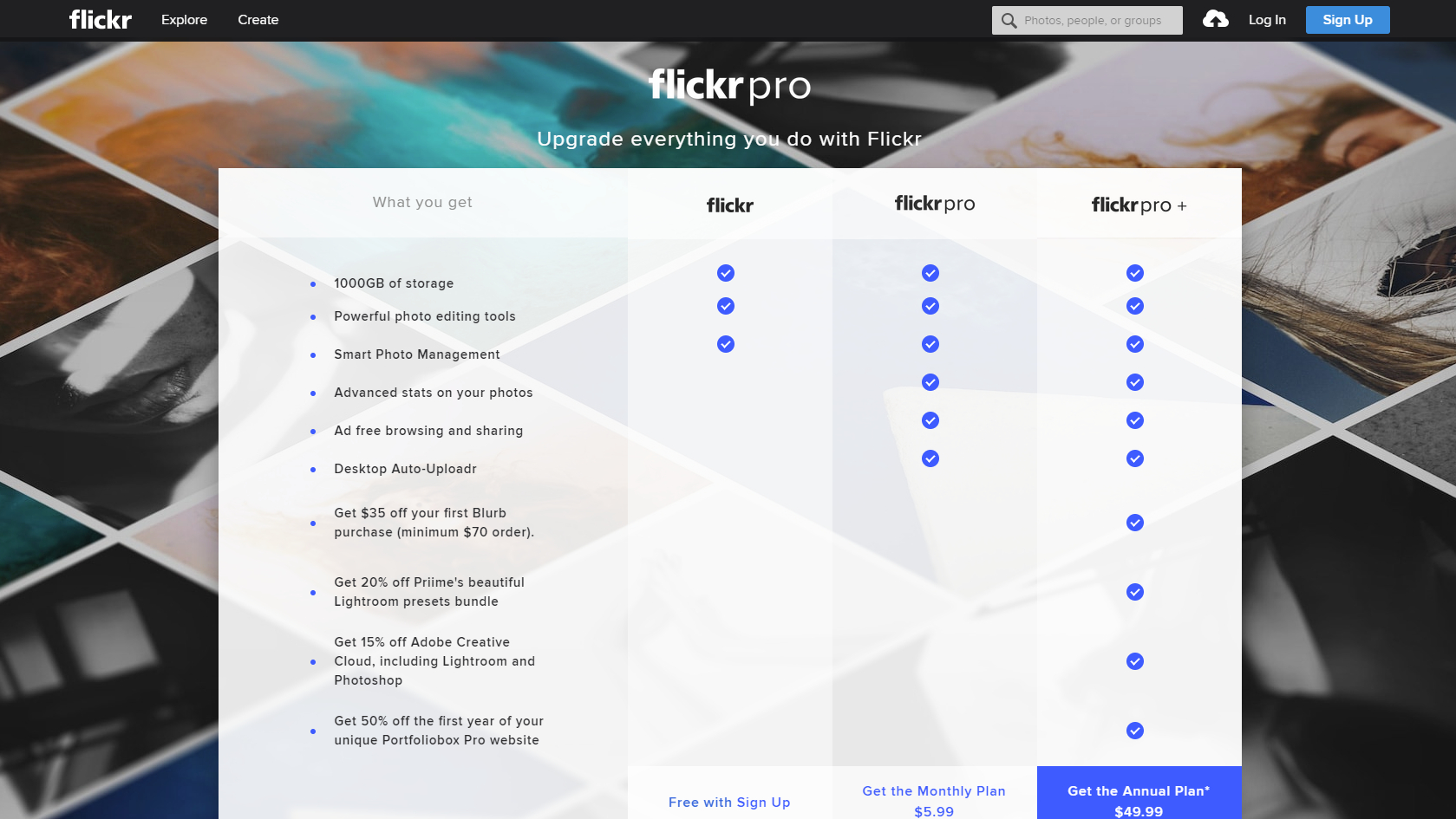
It’s difficult to mention free image hosting and not bring Flickr into the conversation. The site experienced a meteoric rise under the ownership of Yahoo and Oath/Verizon since 2017, and targets the prosumer audience rather than casual happy GIFer users. Flickr’s base offering remains free with 1TB of storage, powerful photo editing tools and smart photo management, while its paid-for Pro Plus boasts advanced stats, ad-free browsing and a desktop auto-uploader.
With tens of millions of subscribers, Flickr has managed to build one of the biggest photo communities on the web. Also note that if you are in the market for an Adobe Creative Cloud subscription, you can get a 15% discount, which should be more than enough to buy the paid-for Flickr account.


This little-known image hosting website has a unique feature which makes it massively useful for those looking to create thumbnail galleries very quickly. You can upload compressed ZIP files (up to 250MB in size), ideal for archives without index. There is a 10MB file size download limit for pictures, with no limits on the number of uploads/downloads, or how long a file is hosted – only JPG, GIF and PNG files are supported, though.
Unlike others, Imagebam’s focus is entirely on hosting pictures rather than fostering a community and encouraging discoverability. While registration is optional, it provides you with photo management tools, and the ability to organize your images and galleries.

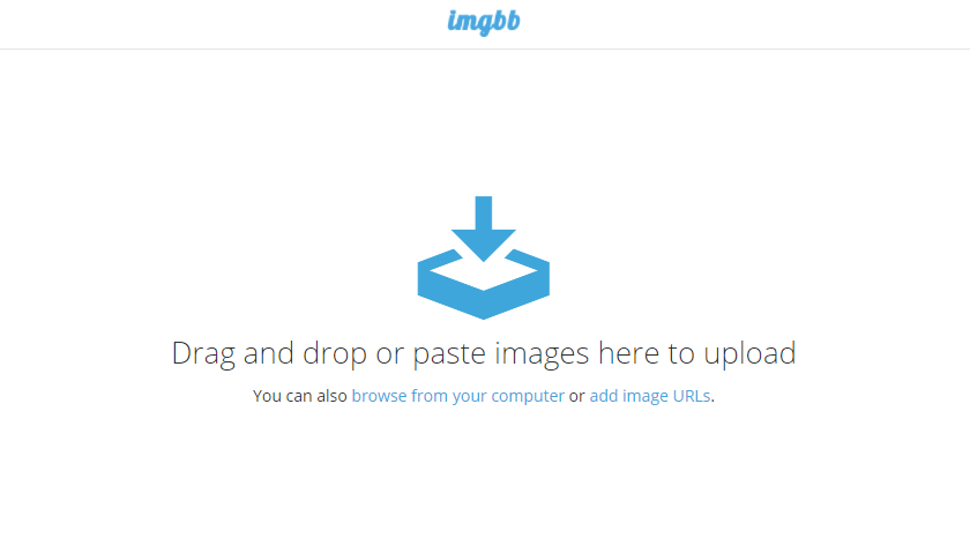
It’s near impossible to go more minimalist than Imgbb and that’s probably why it’s one of the more popular image hosting websites around. Simply drag-and-drop your files on the homepage and you’re ready to go. There’s a 16MB limit (all major image file formats are supported), but no limit to the number of files you can upload, or restrictions on how long they can remain online. Imgbb doesn’t require the user to register – just be aware that all the pictures you upload will be reviewed by human editors.


Like Imagebam, Imagetitan doesn’t operate an entire community, instead simply providing a straightforward browser-based interface. There are no mobile apps here – you can only upload files smaller Than 1.5MB, and only the three major image file types are accepted (JPG, GIF and PNG). There’s no limit to the number of files you can upload, and no bandwidth restrictions, plus the pictures will remain online for as long as you want.
You are provided with a deletion code to remove pictures at a later date. You don’t need to register and you can upload pictures via FTP (up to 100 of them). Hot-linking is not prohibited but Imagetitan doesn’t provide direct links.


At the other end of the spectrum is Pixabay, a popular upmarket image hosting service that pegs itself as an online community of people who publish high quality copyright-free images and videos. To be part of this exclusive club, however, you must stick to the site’s stringent image quality guidelines, which means that all the photos are vetted by humans.
Login is compulsory and the mobile apps do not currently support direct image uploads. Pictures need to be at least 3,000 pixels wide, up to 40MB in size, and you can upload up to 10 pictures in 10 days. High quality images won't effect the upload limit and the more high quality images you submit, the more your daily granted number of uploads will increase.
Other popular image hosting sites include…
Tinypic: A fast, simple and reliable free video and image hosting site owned by Photobucket. There is no registration or login required, simply submit your picture or video.
Use.com: Another well-loved free image hosting website that offers unlimited uploads, perpetual online storage and unlimited bandwidth. Use.com boasts an extra level of privacy by allowing you to share photos and videos with just your friends and family – or with the whole world if you prefer.
Pexels: One of the growing rivals to Pixabay, Pexel wants to help designers and bloggers – and indeed everyone who is looking for an image – to find great photos that they can use everywhere for free. All photos submitted are therefore released under the CC0 license which means pictures can be used for free without attribution.
Deviantart: By far the biggest community of image sharers in the world is Deviantart. An “online social network for artists and enthusiasts” is how the service describes itself, and 45 million or so registered members have uploaded millions of pieces of art online. This is probably as far away as you can get from the likes of Imgur and traditional image hosting websites.
- We’ve also rounded up the best web hosting services for 2018
from TechRadar - Internet news https://ift.tt/2qd83jk
via IFTTT
Firefox beats Edge with swift response to massive browser security hole
The existence of a nasty bug that affected the Firefox and Edge browsers has been revealed, and although the flaw has now been patched in both cases, Mozilla’s response to the issue was a far more efficient affair than Microsoft’s.
Jake Archibald, a developer advocate for Google’s Chrome browser – which wasn't impacted by the flaw – discovered the bug, which he dubbed ‘Wavethrough’, because it involves exploiting WAV audio in the browser to allow data through which shouldn't be viewable by the attacker.
And it could potentially be used to spill some alarming personal data, if the user is persuaded to visit a malicious site primed to take advantage of the vulnerability. Archibald notes that: “It means you could visit my site in Edge, and I could read your emails, I could read your Facebook feed, all without you knowing.”
Nasty indeed. The good news, as we noted at the outset, is that this has been patched in both the affected browsers – but what’s almost as interesting as the bug itself is how Mozilla and Microsoft reacted to the report of the problem.
Archibald observed that “Firefox handled this brilliantly,” – within three hours the bug had been confirmed, and Mozilla had looked into other potential similar leaks.
“I was able to engage with engineers directly on how the issue should be fixed,” Archibald added, and as the vulnerability was caught in a beta version, Mozilla patched things up before it ever made the release version of Firefox. That happened back in March.
Jumping through hoops
As for Microsoft, however, Archibald tells a very different story. He reported the bug to the firm’s security team on March 1, then had to jump through several hoops to actually get them to look at the issue, and he subsequently waited 20 days without any response.
Eventually, after some chasing, Microsoft’s security team informed Archibald that they were indeed developing a fix, but gave no further details. More waiting, and further chasing on the bug bounty – which Archibald wanted to donate to charity – ensued.
Archibald essentially observes that the whole process felt like something of a trial, and noted: “I really want Microsoft to look at the experience I had with Firefox and learn from it. Security issues like this put their users at huge risk, and they need to ensure reporting these things isn't more effort than it's worth.”
Microsoft fixed the issue in Edge in its latest round of patches earlier this month, with the severity of the update labelled as ‘important’. Indeed, Archibald provides a link in his blog post to test if the attack works on your version of Edge, and advises that you should (obviously) immediately update your browser if it does.
Microsoft has always been big on emphasizing the security of Windows 10 in general, as well as Edge, which it’s pushing hard as the operating system’s go-to browser, but as we’ve seen in the past it hasn’t always come up trumps in terms of defeating vulnerabilities or hackers.
If Archibald’s experience is anything to go by, there’s certainly some work to be done in terms of organization and communication for Microsoft’s security team.
This isn’t the first time Edge has been criticized this year in terms of a sluggish response to fixing a vulnerability, either, as we saw back in February.
- Do your web surfing in style on one of our best laptops
from TechRadar - Internet news https://ift.tt/2K4vfWs
via IFTTT
Wednesday, June 20, 2018
Instagram's new long-form video hub, IGTV, expected to launch today
Instagram's long-form video hub is expected to launch today, and will be named IGTV. According to TechCrunch, the new channel will launch with clips from independent creators who have a sizeable following on Instagram, as well as professional "content houses".
Videos are currently limited to 30 seconds for Instagram Stories, and one minute for users' main feeds. IGTV will reportedly support videos up to an hour in length, though the site is encouraging creators to aim for a more manageable 10 minutes.
Two weeks ago, the Wall Street Journal reported that Instagram was planning a new feature with support for much longer clips and a "focus on vertical video", but this is the first time we've heard details of how the new hub might work.
We'll update this article once we know more.
from TechRadar - Internet news https://ift.tt/2toVXlH
via IFTTT
Best free web hosting of 2018
Everything your business needs to know about VPS
Most of us have heard of shared hosting, for personal use, and dedicated servers, which power large company infrastructures. However, if your business sits in between personal use and such enterprise giants, there is a third alternative, VPS.
- These are the best VPS hosting providers of 2018
What is a VPS?
VPS (virtual private servers) are isolated virtual environments created from a physical server through a process called “virtualisation”. This means that in effect you can have your own customised server solution at a fraction of the cost of an entire dedicated server. One bare metal server came home several VPS’s at once. The other massive advantage of VPS hosting is scalability: depending on your needs at any given time, you can easily add or remove resources and only pay for what you are actually using.

Flexibility as the end game
While hardware resources are shared, each client on a VPS still gets its own software environment (operating system) and therefore more flexibility to play around and for all purposes, a VPS is almost equivalent to a fully kitted computer. Virtual Private Servers can be managed or unmanaged with the client taking full responsibility of software updates and patches. Being isolated means that VPS are great for running SaaS projects (like a personal cloud or a VPN server) or websites that have a reasonable amount of concurrent users.
VPS vs Shared Hosting
The very reason why VPS came on the market in the first place was to fulfil a gap between dedicated servers and shared web hosting offers. For small and medium businesses as well as IT managers, it represents the “Goldilocks” of web hosting; not too complex, not too expensive, not too slow, just the right balance.
Shared web hosting may be very cheap and great for novices but ultimately, you get what you paid for which is the lack of flexibility especially when it comes to handling traffic spikes (e.g. Christmas sales or a popular page) or when a website has simply outgrown its original bedding.
The ability to scale rapidly without additional complexity or overhead and with at least one order of magnitude, sets VPS apart from other types of hosting.
VPS vs dedicated server
VPS cost a fraction of a dedicated server and are far more flexible as you do not need to pay for extra capacity or resources that will be unused. Instead, most providers allow customers to transition without friction between different tiers depending on demand.
Traditional VPS vs Cloud VPS vs SSD VPS
Traditional VPS tend to use hard disk drives for storage; However, some vendors, like VPS.net, have eschewed HDD completely, not only because of performance but also because of reliability and kitted their servers with SSD (solid state drives) only, hence the moniker SSD VPS. SSD are great for serving concurrent users as they can handle a high number of input/output operations simultaneously.
Cloud VPS extends the virtualisation paradigm across multiple servers rather than one making it more redundant but also more expensive.
In traditional and SSD VPS, a hardware failure will affect all VPS hosted on that particular machine, cloud VPS adds a layer of reliability, allowing websites and services to run without significant downtime even if a server is physically removed from the server cluster.
Businesses opting for Cloud VPS are likely to seek stringent SLA as downtime would be very costly; some providers, for example, offer a 1,000% SLA; that’s 10 times the pro-rated rental for the downtime of the affected services.
from TechRadar - Internet news https://ift.tt/2Fd1QYy
via IFTTT
Tuesday, June 19, 2018
Android users can now limit how much data their friends use
Google has updated its data-saving app Datally with several new features, including the ability to limit how much data your friends and family can use when they borrow your phone. No more sneaky streaming sessions gobbling up your allowance without your permission.
You can also set daily usage limits, helping you portion out your data throughout the month so you don't run out partway through, and Google will soon add warnings so you know when it's time to start cutting back on the video calls.
Datally now shows nearby Wi-Fi networks too, helping you find an alternative way to get online, and highlights any installed apps that you don't use, but are sucking up your data regardless.
Slash data use
Datally is a handy app for anyone without an unlimited data plan, and Google claims it can help cut your data use by up to 30%. It's also ideal for Android users in countries where mobile data connectivity is patchy and expensive, though it's different to the data management app supplied with Android Go – the mobile operating system designed for low-powered, affordable smartphones.
Android Go comes with streamlined versions of all Google's key apps (including Gmail, YouTube and Chrome) that are designed to make frugal use of mobile data and use minimal system resources. For example, YouTube Go lets users cache videos for offline watching, and share clips wirelessly using Wi-Fi Direct and Bluetooth.
Android Go's data saver takes a more active approach than Datally, removing unnecessary images in apps, switching to low-bitrate video, and preventing updates downloading automatically.
- Check out our guide to the best free Android apps
Via The Verge
from TechRadar - Internet news https://ift.tt/2yu1pcu
via IFTTT
Friday, June 15, 2018
Thursday, June 14, 2018
Mozilla 'Scout' could be a voice controlled version of the Firefox web browser
Forget mice and keyboards, or even finger swipes and taps – the future of web browsing is voice control. Or, at least, that's what Mozilla seems to think, as it begins work on its new Scout project.
With Amazon's Alexa, Google's Assistant and Apple's Siri making waves in the voice assistant and smart speaker spaces, Mozilla appears not to want to be left behind. A note for an internal all-hands meeting describes Scout as an attempt to "start to explore browsing and consuming content with voice."
It's clearly very early days for the project, with little other detail to go on, but it explicitly calls the project a "voice browser", keeping it very much in the Firefox dev's usual wheelhouse.
Work in progress
"This talk will discuss the architecture and key components needed for a voice platform, the required capabilities of those components and the challenges of working with the limitations and confines of existing platforms," reads the listing.
In a statement given to Cnet, Mozilla confirmed it was experimenting in the space and would be "discussing these efforts publicly when they are further developed."
In terms of accessibility, a browser that could fluently and intuitively be controlled by voice alone would be a game changer, especially as so much professional and personal PC use is now channelled through a browser.
And, on top of that, Mozilla has a great track record for protecting privacy and user data. With there still remaining some skeptical quarters in relation to always-listening voice control, Mozilla could prove a trusted entry point for privacy advocates.
- The best web browser 2018: faster and more secure
from TechRadar - Internet news https://ift.tt/2yjLVIn
via IFTTT
Wednesday, June 13, 2018
Best merchant services of 2018
What is web hosting? All you need to know about choosing the right provider
If you have recently finished creating your own site, or you have one currently being designed for you, you’ll know the next big step is getting it online and live. This is where web hosting comes in .
Think of your website as a series of documents on your computer (images, videos, HTML files etc). Just as a Word document has to be saved and stored on your computer, so too does your website need a computer to store it.
The big difference is - you want your website to be seen by the general public. For this to happen, the computer it is stored on must usually be of a much higher specification than your own PC, and connected to the internet through a dedicated link.
- You can read our list of the best web hosting services and the best free web hosting providers.
IP, IP, IP, Hurray
This dedicated link is known as a static IP. Dynamic IPs, as is the case at home, refresh every so often resulting in a change in IP address. While this isn’t necessarily a bad thing, static IPs do provide an advantage. Every time a dynamic IP refreshes, you run the risk of downtime on your server.
Additionally, static IPs allow you to run an FTP (File Transfer Protocol) server – meaning you can easily move files from one computer to another - as well as being able to have your own private SSL certificate, something we cover in another article.
The computer where the web pages are stored is called a web server. It stores the information used to render web pages - on request - to users of the internet. The task of making websites and web pages available to many users is called web hosting.
Companies selling hosting services are actually selling disk space (as well as compute power and bandwidth) on their servers for you to host your website.
Servers are stored on racks in purpose-built data centres, which are temperature controlled, secure and provide a backup service. The space is measured in large numbers of bytes. So now you know what hosting is, let’s delve a little deeper…
Computers with superpowers
A web hosting provider will have rooms filled with rows and rows of – what look like – PC towers aligned horizontally, and it’s here that you will find the files belonging to all of the websites they host.
Web servers are like your computer at home, except usually much faster and more powerful. In theory, your home computer could act as your very own web server to host your website.
Although we wouldn’t recommend it, unless you know what you are doing. The specialist skills needed to keep a website up-and-running are vast. If you’re not an internet security expert, hardware engineer, Sysadmin and DevOps specialist, you’ll struggle to host your own website.
Hosting is a tricky business and involves technical know-how and internet wizardry that you’re better off leaving to the professionals. Focus your efforts on the content of the website instead and let the hosting company do what it’s good at.
Put simply; using a good hosting company will save you time, money and make your life far less stressful.
- This is an adapted excerpt from an eBook called "The ultimate guide to web hosting", published by TechRadar Pro in association with Planet Hippo
from TechRadar - Internet news https://ift.tt/2LIhOfp
via IFTTT
Tuesday, June 12, 2018
Best ways to share big files
If you've just recorded a home video or created the ultimate mix tape – a digital version of that old chestnut, of course – no doubt you'll be eager to share it with your friends and family.
Depending on the size and number of files you need to send, this can be a problem. For instance Gmail only allows you to attach files of up to 25MB in total to email messages. Not to mention the fact that large files will quickly eat into your storage space quota while lurking in your Sent folder!
If you need to send big files online, there are plenty of good ways to do so without running into trouble – and we’ve highlighted 12 of the best here, the vast majority of which are free (though they tend to have premium tiers if you want to pay for an improved service).
1. Use a VPN
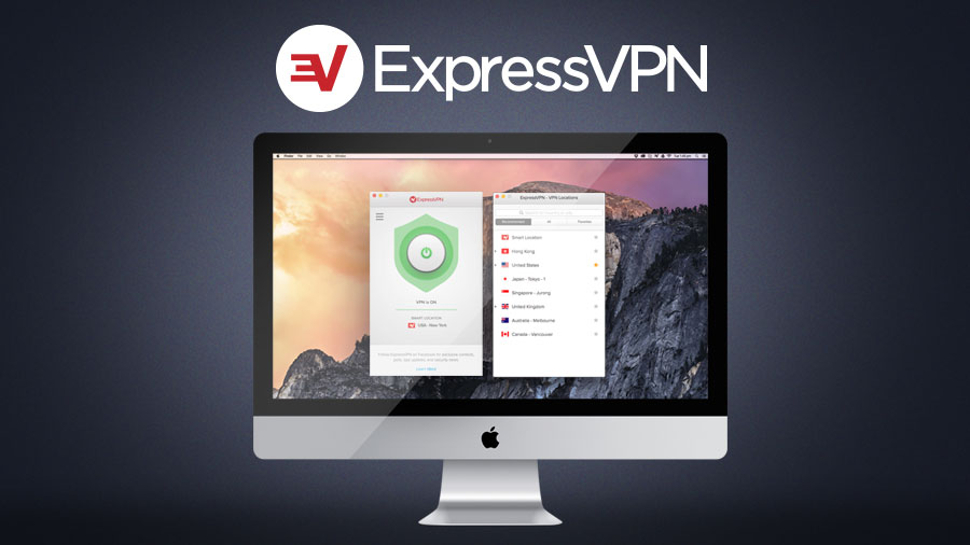
What? I hear you say. What does a VPN have to do with sharing large files. Well, unbeknown to many, some internet service providers (like Virgin Media) use broadband traffic management to moderate upload bandwidth (rather than download). Using a VPN like our number one choice, ExpressVPN, means that your ISP cannot determine the type of files you're uploading and therefore cannot - in theory - apply traffic shaping to your account.
P2P (peer-to-peer), one of the most popular and reliable methods for moving large amount of data, is the one type of content that's most likely to be flagged and pushed down the priority lines. We have compiled a list of the best VPN services available. Just bear in mind that your mileage will vary and using a VPN can also slow down your connection.
2. Use file compression

One of the easiest solutions to the problem of sending large files is to use file compression software such as the cross-platform program 7-Zip. This is particularly handy if you have multiple files, as you can place these in one folder and compress them all in one go. As a rule of thumb, a large file will transfer faster than a folder containing smaller files of the same size.
7-Zip is available for Windows, Mac and Linux, and can compress files to the regular ZIP format as well as its own slightly more efficient 7ZIP. Most major operating systems can extract ZIP files without any additional software. 7-Zip also lets you set a password to protect the files, so you can share them safely. Just bear in mind though that uploading very large files can time out.
3. Courier a hard drive

The fastest way to transfer a large number of big files is not via the internet but by using a disk drive and a courier. All the big cloud providers (Microsoft, Google and Amazon) have the ability to transfer large amounts of data using hard disk drives.
Microsoft Azure charges a nominal flat fee of just under £60 ($70) per storage device handled, but you must be prepared to supply your own drive. This is similar to Amazon Web Services' Import/Export disk, whereas Google uses third-parties.
Transferring the content of a 20TB external hard disk drive on a 100Mb dedicated line would take more than 500 hours (or around 20 days), on consumer-grade broadband lines, expect it to last more than one month and that's for the upload only. Just remember to keep a copy of your files and to encrypt the hard drive you're sending.
4. Google Drive
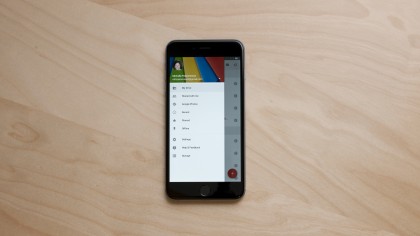
Although Gmail messages can only have attachments up to 25MB in size, when files are too large Google gives you the option to place them in your Google Drive and send a link to share. Gmail users can share files and folders up to 10GB in size. Considering that Google's free tier gives you 15GB of storage, you can repeatedly share large files entirely free of charge (assuming you delete, rinse and repeat).
Google allows you to choose whether to create a link that can be shared with anyone, or one which is only available to people to whom you send the email with the link. Premium plans start from $2.34 (£1.59) per month for 100GB storage.
5. FTP

While FTP (File Transfer Protocol) may be fairly old-school when compared with cloud services like Dropbox and Google Drive, it's still one of the most reliable ways to upload and download files.
All operating systems support FTP and there are plenty of websites and add-ons which support uploading and downloading from within your browser, such as FireFTP. Windows and Mac users can also make use of the free desktop FTP client Cyberduck.
The only downside to this is that you need to have access to a remote server (like a web hosting service). Many companies like DriveHQ offer some free storage space (1GB), and prices can compare very favourably with cloud storage providers.
6. Mediafire
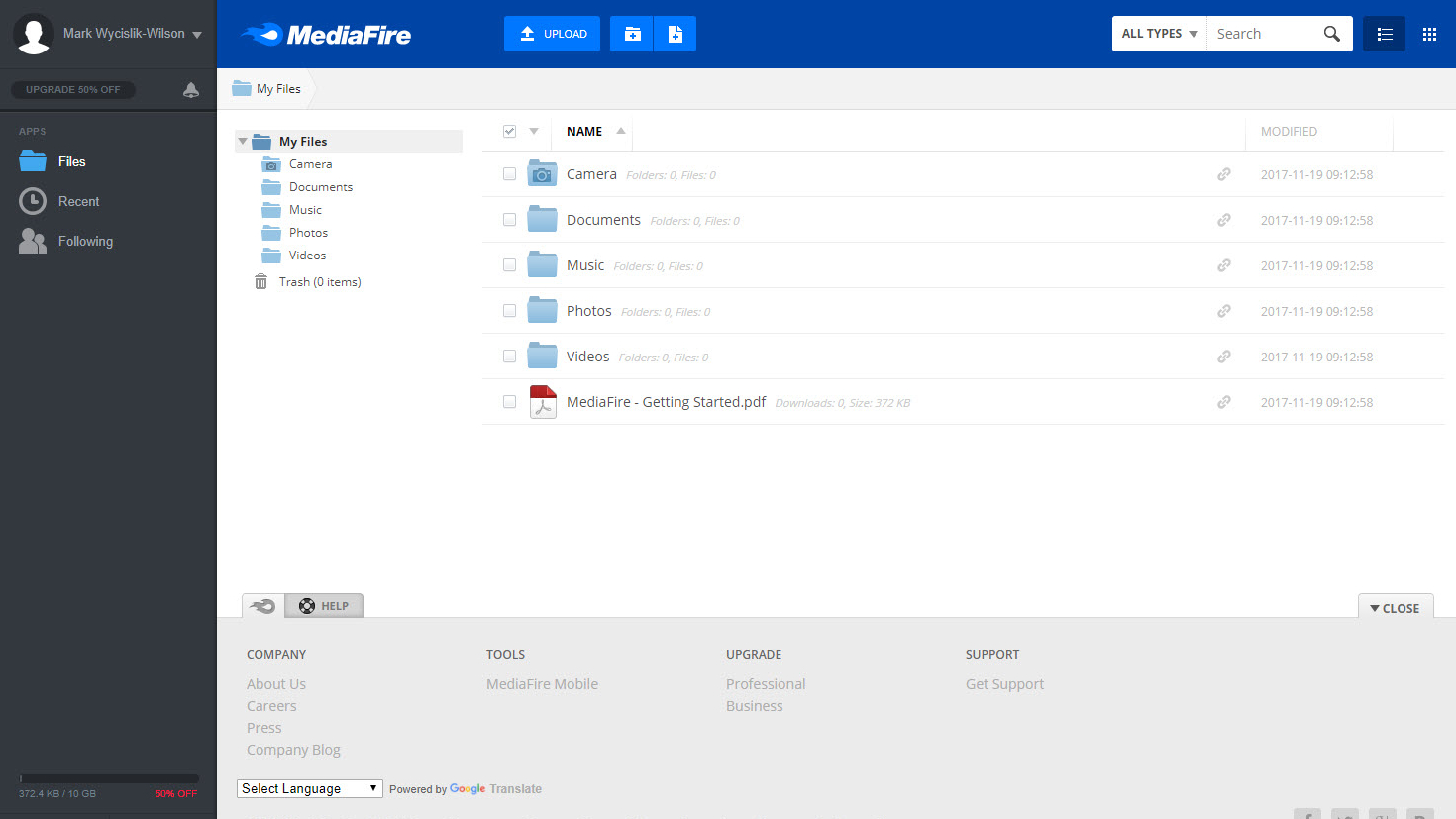
True to its name, MediaFire is a trailblazer. Register for a free account and you get 10GB of storage. Connect your Facebook and Twitter accounts, install the mobile app, and refer friends to earn up to 40GB of bonus space. You can upload files either directly from your computer or the web, and generate a link which will allow others to download your files from the MediaFire website.
Paid subscriptions begin from $3.75 a month (around £3, AU$5) and include 1TB of storage space, a hefty 20GB limit on file sizes, as well as eliminating annoying Captchas and ads. Another handy premium feature is one-time links which make sure that once your recipient downloads your files, they're no longer accessible.
7. Hightail
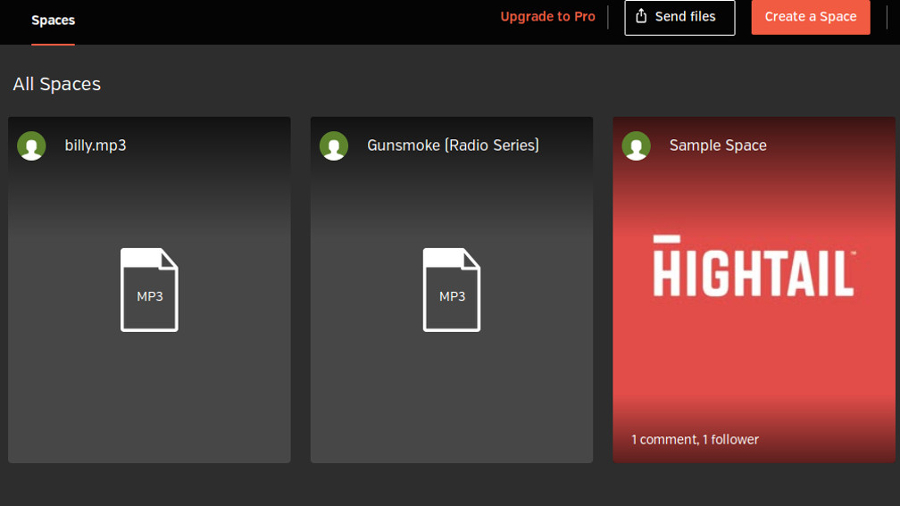
Hightail (formerly YouSendIt) has been made with business users in mind. Upon registration you can create special ‘spaces’ for various files and projects, which you can then share with others. The handy ‘PipPoints’ feature can even be used to record notes on documents as you and others work on them.
The free Lite version of Hightail only allows sharing of files up to 100MB in size. The Pro subscription is available from $12 a month (around £9.50, AU$16) and includes unlimited workspaces and support for files of up to 25GB. There's also no limit on the number of people who can access a file at any given time.
8. Wetransfer

WeTransfer is one of the simplest services to use for sharing large files. A few clicks of the mouse and the website will automatically send files for you, and these will be available to download for seven days. Everything is very user-friendly, too, with a step-by-step wizard to walk you through the upload process.
For $12 a month (around £9.50, AU$16) or $120 (around £95, AU$160) per year you can upgrade to WeTransfer Plus which allows up to 20GB of file transfers at a time, and 100GB of storage. You will also have the option to set a password to download files – plus you can customise backgrounds and emails if you wish.
9. Resilio Sync

Formerly BitTorrent Sync, this handy utility uses the BitTorrent protocol – designed specifically for sharing big files – to sync files directly between your devices. This peer-to-peer connection can be used for two or more devices, such as a phone and desktop PC.
Resilio Sync also supports generating secure links to allow your contacts to download files from your folders. This naturally means your device has to be online at the time in order for them to access it. The software itself is provided free of charge and there are no limits on how much data you can transfer or store.
10. Adobe Send & Track
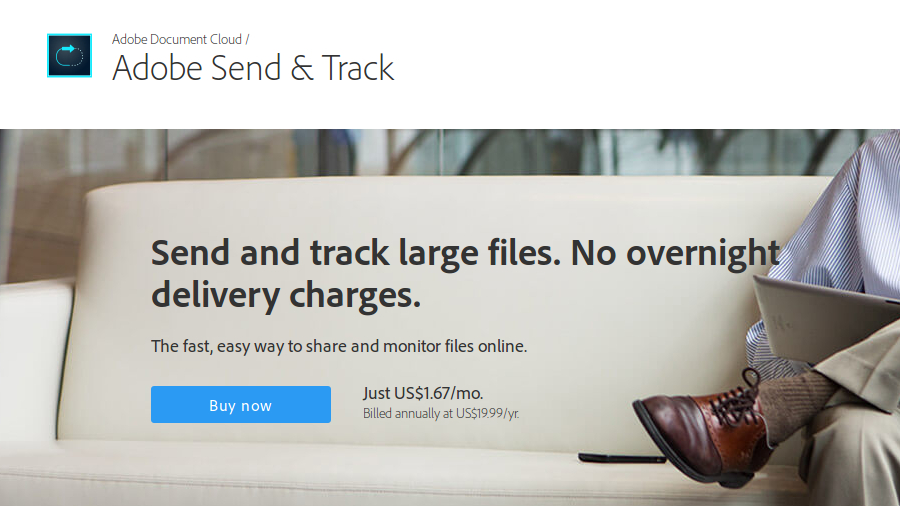
Send & Track lets you use the Adobe website or Acrobat Reader app to share large files with multiple recipients, whatever device you’re using (be that phone or PC). The website doesn't mention any limit on the number or size of files you can send, but the service isn’t free and will set you back $20 per year (around £16, AU$27).
There are also restrictions on what files can be sent – for example, 7-Zip archives aren't allowed. One of the most useful features here is the tracking, whereby you can see clearly whether a document has been opened or not.
11. Send Anywhere

Send Anywhere is available for just about every platform you can think of, and can transfer files up to 10GB completely free. The file sharing service is available as a web app at https://send-anywhere.com, as a browser extension for Chrome, as a mobile app for Android and iOS, and as downloadable software for Windows and macOS. There are also versions for Linux and Amazon Kindle, plus plugins for WordPress and Outlook.
The browser widget lets you share files up to 4GB, but the desktop software supports files up to 1TB for paid subscribers. That should be more than enough for all but the largest 4K video files.
12. Dropbox
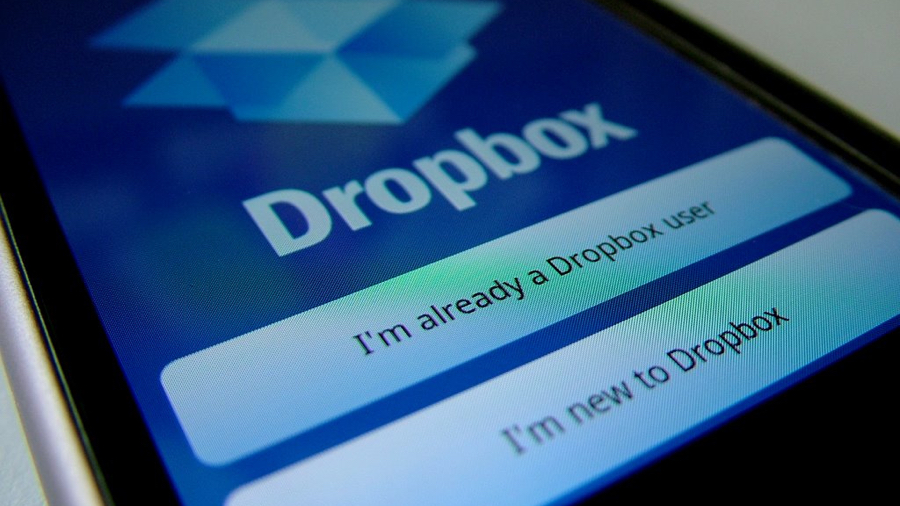
Sign up for this cloud storage service and any files moved into your Dropbox folder can be shared through use of a web link. Some operating systems let you do this by right clicking, for others you may need to log into the site and click the Share link. Most importantly, the person to whom you send the link doesn't need to be a Dropbox user – they can simply download files from the site.
Dropbox has a free tier which gives you 2GB of storage space, but you can earn more by referring friends to use the service – or increase the limit to 1TB by signing up to Dropbox Plus for $9.99 per month (around £8, AU$13). The latter also allows you much greater control of files, including versioning as well as remote device wipe, and you can set a password for downloads.
from TechRadar - Internet news https://ift.tt/2t36rH4
via IFTTT
Best Bitcoin wallet
Once you’ve bought Bitcoins (BTC) or other cryptocurrencies via an exchange (like Bitstamp), if you plan to spend your cryptocurrency right away, you can do so directly from the exchange. If you prefer to hang on to your digital assets, you'll need a secure wallet to which you can transfer your virtual coins.
In this guide, we'll explore five of the very best cryptocurrency applications available today for storing your digital wealth. Each of these programs allow you to generate private keys, which you can store safely, rather than trusting an online exchange which can be hacked or go out of business.
All of these clients are known as 'hot' wallets in that by default they're connected to the internet at all times. If you are moving large amounts of Bitcoin, consider creating a 'cold' offline wallet to store your assets (see our guide to creating a secure cold storage Bitcoin wallet).
- We also show you how to mine Bitcoins
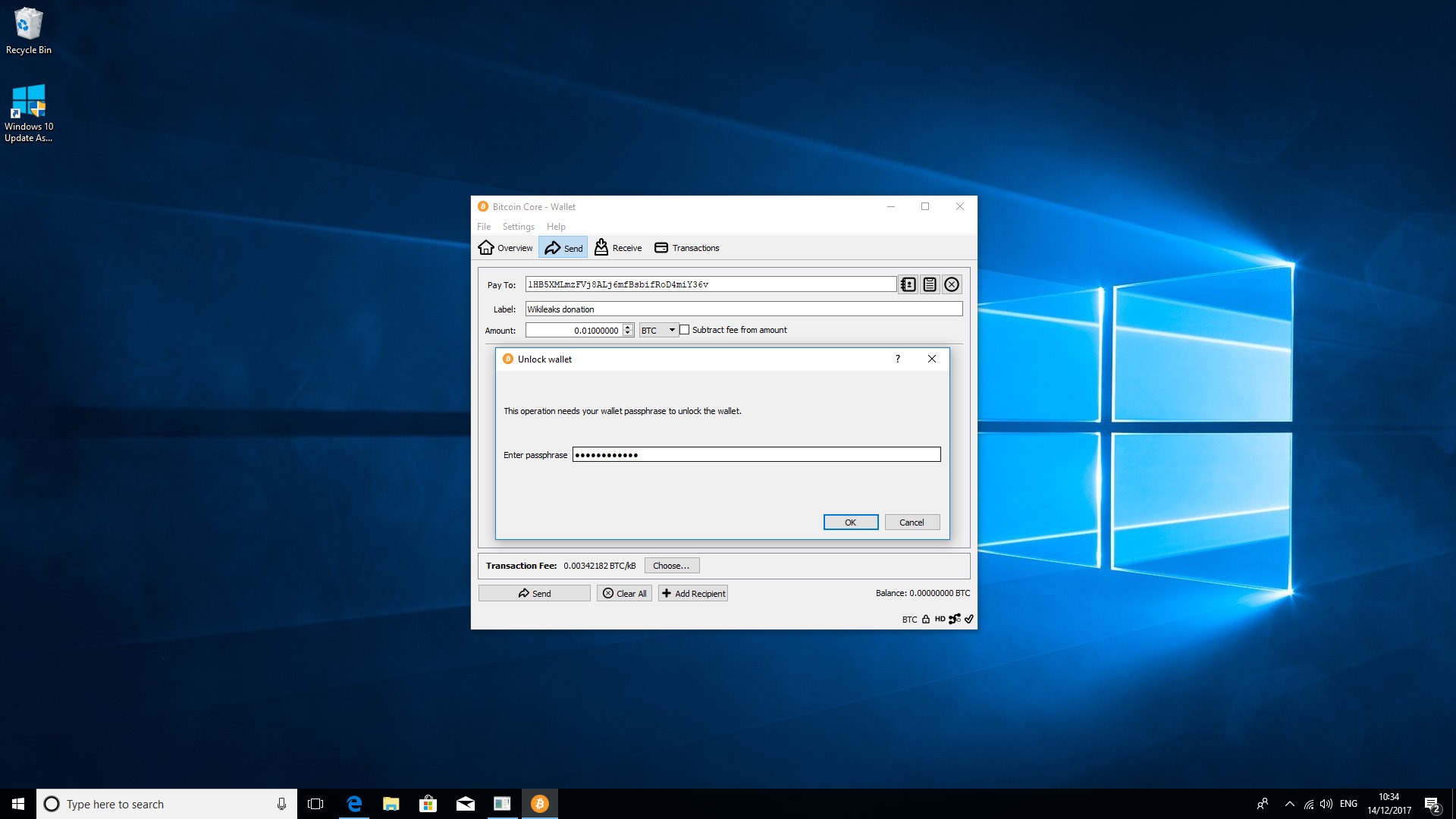
Bitcoin Core is the original BTC client and is available for Windows, Mac and Linux. Core is a 'full node' Bitcoin client, meaning that on first-run it will download the current version of the blockchain (currently around 160GB) by connecting to other nodes. It will then continue to download and process data about Bitcoin transactions.
One advantage of this is that it's much more difficult to link a specific BTC payment address to your identity as Core downloads data about all Bitcoin transactions everywhere. This also protects you against certain types of fraud such as someone trying to spend the same BTC twice, or fooling you into believing you’ve received funds you haven't actually got.
Core comes preconfigured to run through the Tor anonymizing network. This makes it very difficult for anyone to link sending or receiving BTC to your home IP address, ensuring your privacy. All this requires huge amounts of bandwidth – Core must be connected to the internet every day to stay in sync with the network.
On first launch, Core will create a wallet file (wallet.dat) containing your private keys. By default anyone can access it, but you can encrypt the wallet with a password if you wish. (We’ve got a handy guide on setting up Bitcoin Core).

Electrum has been around since 2011 and works with Windows, Mac, Linux and Android. It's one of the most popular 'thin' wallet clients, in that instead of downloading the entire Bitcoin blockchain, it connects securely to other servers to verify your BTC balance and process payments. This means you can set it up in minutes and it takes up very little space on your hard drive.
Electrum uses a 'hierarchical deterministic wallet', in that when you first launch the program it generates a random 'seed' of 12 dictionary words, from which it derives the keys necessary to spend and receive BTC. Electrum displays the seed as you create your wallet and requires you to write it down. This means that if you lose access to this version of Electrum, you can easily reinstall it on another machine and use the seed to restore your BTC.
Unlike the Bitcoin Core client, Electrum offers you the option to encrypt your wallet file during setup, although you can choose to leave it unencrypted if you wish. You can also use Electrum in 'cold storage' mode to create a 'watching only' wallet. This allows you to receive Bitcoin payments and see your balance, but not spend the coins, which may be useful if you're buying BTC as a long-term investment.
As a 'thin’ client, Electrum relies on other servers for payment information, making it more vulnerable to certain types of hacking than 'full nodes' such as Bitcoin Core. See here for more information about how Electrum tries to protect you from this.
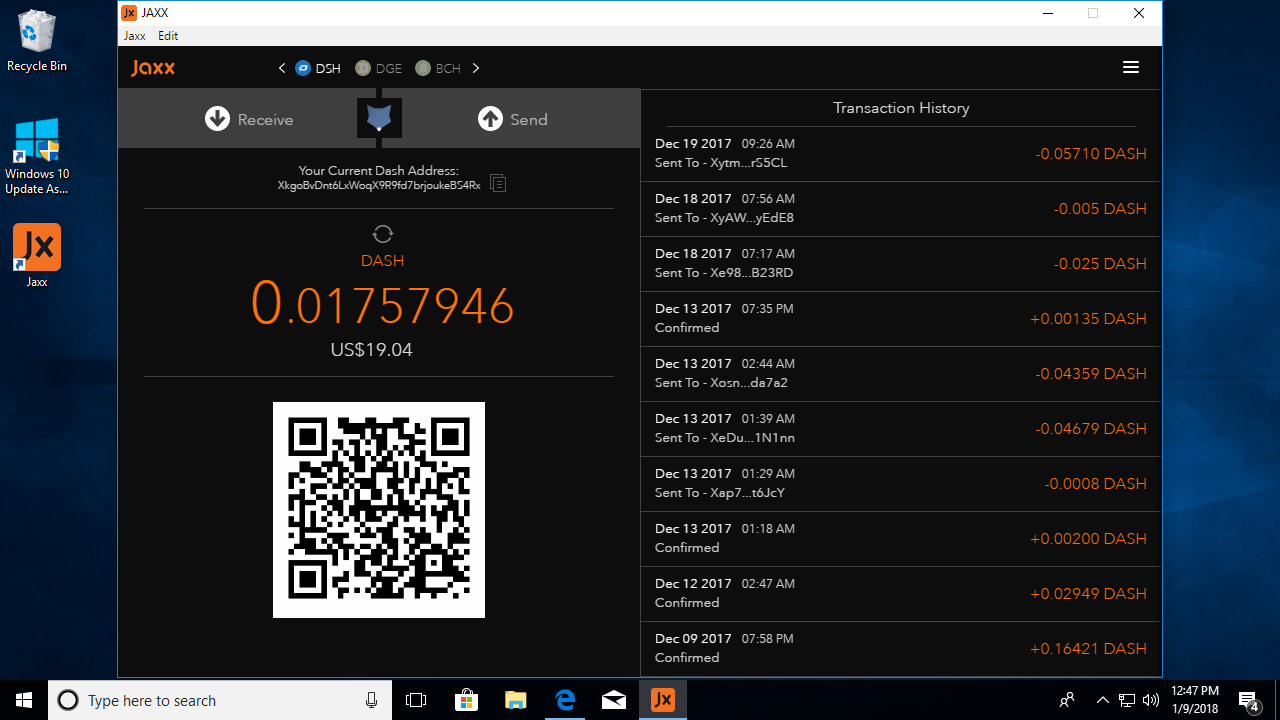
Jaxx was first developed in 2014 and serves not only as a Bitcoin wallet but an app which can store multiple cryptocurrencies such as Litecoin, Dash, Ethereum and Bitcoin Cash. Ripple is not currently supported but the Jaxx team have hinted they may support this feature in the future. (For a full list of supported currencies see here).
When first run, Jaxx displays a 12 word 'master seed' similar to Electrum which you can write down and use to restore your wallets if you lose access to the original program.
The interface is deceptively simple in that you can quickly and easily switch between wallet balances. Jaxx has also integrated Shapeshift support. This functions as a built-in currency exchange, allowing you to quickly exchange crypto balances, for instance to convert DASH to BTC. You can view your updated balances as soon as processing is complete.
Jaxx is available as a Chrome extension as well as for Windows, Mac and Linux. There's even a mobile app (both for Android and iOS), so it's likely you can view all crypto balances from a single device.
The software is closed source, however, so cannot be reviewed by the community in order to hunt for security bugs. Note that one such bug was discovered in June 2017 which allows someone with access to your machine to extract your master seed and steal your coins. Until this is fixed we recommend using Jaxx only for storing and exchanging small amounts.

Update: service closed
Ripple is one of the top five cryptocurrencies in terms of capitalization and although it was designed to facilitate transactions between banks, many individuals also use it for speculation and to make payments.
Unlike more popular currencies like Bitcoin, the official desktop client is no longer maintained by the original creators. Fortunately the community has continued to maintain it in the form of Rippex.
Aside from being seemingly the only desktop client available for Ripple, Rippex is very easy to set up. On first-run it generates a 'secret key' which you can write down to restore your wallet in case anything happens to it. The client also requires you to encrypt your wallet file with a password, making your money harder to steal.
In order to activate your wallet you have to pay a fee of 20 XRP (around $43 at current exchange rates, which is about £32). Once you've done this, you can set up a 'cold' offline wallet if you prefer to store your secret keys offline for safety reasons.
If you want to store your XRP outside an exchange but don't want to pay the fee for Rippex, you can also generate a paper wallet instead from http://ripplepaperwallet.com. The website will load the necessary code into your web browser – be sure to disconnect from the internet before creating the wallet.
Rippex is available for Windows, Mac and Linux.
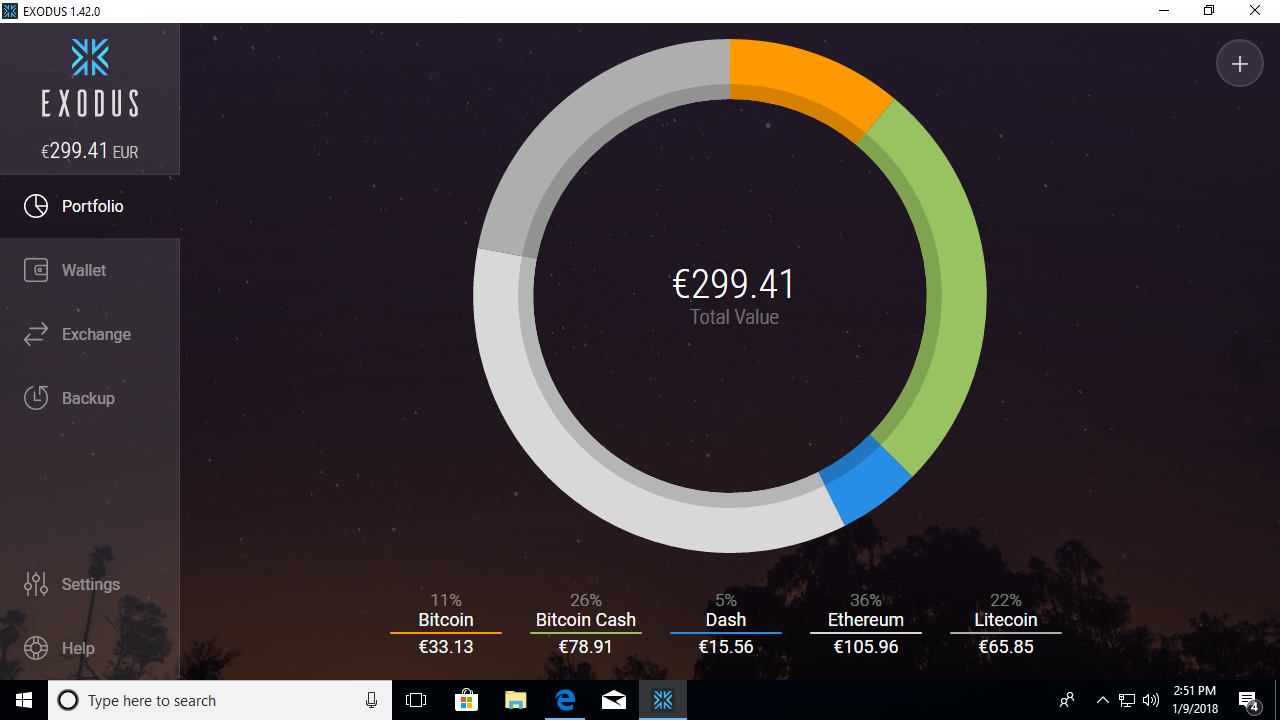
Exodus is a multi-currency wallet and can hold various types of coins and assets. The setup process is very simple. Like Jaxx, you create a 12 word 'master seed' which you can write down and use to restore your wallet if you're no longer able to access the original. (Incidentally, if you've previously created a master seed using Jaxx, Exodus can restore these too). Once setup is complete, Exodus will also prompt you to choose a password to protect your wallet.
Your digital assets are shown in a user-friendly pie chart. Unlike the other wallets we've discussed here, you can also choose different 'skins' to make your client easier on the eye. Use the localization settings to change the default currency (USD) to your home currency if necessary.
The wallet software also supports exchanging crypto-assets and currencies using Shapeshift, and even lists the percentages of assets you hold as part of your 'portfolio'. Sadly Dogecoin is no longer supported.
Exodus is also not 100% open source. The company claims on its website that doing so would give away trade secrets and make it easier for hackers to create bootleg versions of its wallets. In light of this, if you use Exodus you'll have to trust that there are no undisclosed security bugs or backdoors built into the software.
- We’ve also picked out the best graphics cards for mining Bitcoin, Ethereum and more
from TechRadar - Internet news https://ift.tt/2DwDPLd
via IFTTT
5 common mistakes to avoid when choosing a web hosting service
If you are relatively new to the world of web hosting, you will be bombarded by advices and tips once you start looking into ways to host your brand new website (or indeed, even when you are at the planning stage or trying to find out whether you actually need a website or should simply go to a website builder). This article will hopefully help you avoid making them.
1. Using a free hosting service
A free hosting service might be useful if you are running your blog/website as a hobby or a community group. It will likely come with banners and pop-up ads though and search engines tend not to like websites hosted on free services. Note that there are good free web hosting services too but it is a very tough market to survive.
They are notoriously unreliable when it comes to speed, uptime and availability and because you haven’t paid for anything, don’t expect any compensation if they disappear or suffer from downtime.
Expect support to be minimal with no advanced features like free databases. You also risk losing credibility, particularly if you are hosted on a domain name like yourbusiness.get-free-hosting.com, rather than using a genuine domain name (although, some free web hosting providers do allow you to park your domain).
The bottom line is you usually get what you paid for and if you paid nothing then don’t expect much. And web hosting doesn’t have to be expensive. We even compiled a list of the best cheap web hosting services here.
2. Choosing a web hosting package with no refund guarantee
Some web hosting companies do not provide a refund guarantee for their starter packages. Choose one that offers a money back guarantee in case you select the wrong package.
A good hosting company will gladly refund you or move you onto a new package that suits your needs. After all, it is in their interests to make sure that you are a happy customer even if you leave them as you may well come back in the future should your circumstances change.
3. Choosing a shared web hosting package when you need a VPS, or vice versa.
The two main types of web hosting packages you can select are shared or VPS. If your website is small and straightforward, shared hosting is the one for you. A Virtual Private Server is only required for websites with high traffic. If your small website grows in the future, you can always switch over to VPS or dedicated hosting, in the meantime save your hard-earned money with some shared hosting.
4. Buying based solely on price
There are two different ways you could go with this:
1. Assume all web hosting is the same, so buy the cheapest you can find
2. Assume the best hosting packages cost more, so go for a higher priced package in the hope of getting better quality hosting.
Hosting is a commodity, so it’s tempting to go for the cheapest plan available, on the other hand you might be tempted by some of the marketing jargon used to up-sell more expensive packages.
In a very competitive market, price cuts and special offers will often be used to win customers, so don’t pay more than you need to and keep your eyes open for discount codes. The saying “you get what you pay for” doesn’t necessarily apply to paid web hosting, as a cheap package will quite often be perfectly adequate for a start-up website or personal blog.
Keep in mind that the price you see advertised is a monthly price. When you get to the checkout that figure will be multiplied by 12 months and have VAT added on top. This is standard industry practice and most hosts will advertise pricing this way. You may also get a discount for going for longer periods (annual or bi-annual).
5. Not knowing your limitations
You will come across terms like “unlimited” and “free” while searching for shared hosting packages. If it seems too good to be true, it probably is. “Unlimited” bandwidth and storage will have a limit.
Check the terms and conditions to find out more, but restrictions of personal file storage are common, as are rules about certain types of media or streaming. Hosting companies have to implement these restrictions to ensure the smooth running of the service for everyone on a shared server since resources (the electricity the server consumes, the bandwidth used by the server, the hard drives) do cost money.
Ask your web host if you can do the following before signing up for a package: Maintain multiple POP accounts, add statistics to your account, install new software on your own, use a shopping cart on your website.
- This is an excerpt from an eBook called "The ultimate guide to web hosting", published by TechRadar Pro in association with Planet Hippo
from TechRadar - Internet news https://ift.tt/2JEs2wP
via IFTTT
Best shows on Netflix for UAE (June 2018)
Best Netflix Shows: Welcome to TechRadar's guide to the best shows and TV series you can stream on Netflix in the UAE.
Want to know what the best Netflix TV shows and best Netflix series are right now? Well pull up a seat, you’ve come to the right place.
We've scoured the video streaming service to create a guide to the best Netflix shows in the UAE right now. We'll keep this list constantly updated with the latest television shows that you should be watching and also tell you why.
- June update: There's plenty to watch in June, with new episodes of Queer Eye, Luke Cage, Unbreakable Kimmy Schmidt, Glow, and the season finale of Sense8.
To that end, we’ve chosen over 30 Netflix shows that you need to watch. Whether you are into meth-laced dramas (Breaking Bad) or fear-inducing dystopias that hit far too close to home (Black Mirror) there’s something for you on the list.
With so much choice, however, it can be tough to find that next great show. But that's why we're here. We've binge-watched hundreds of hours of TV so you don't have to. (I know, I know, some heroes don't wear capes.)
But more than great shows, Netflix is inventive. It’s trying new things, such as Klingon subtitles on Star Trek: Discovery and is a big advocate for 4K and HDR content. Oh, and it finally did something it said it never would - allow you to download many of its shows to watch Netflix offline.
There’s never been a better time to bag yourself a Netflix subscription and binge watch, so get stuck into our gallery and let us know if your favorite show isn't on the list. Without further ado let's dive into the best shows on Netflix!
- Check out our in-depth and completely updated Netflix review
- Want to test out the rival? Here's our Best Amazon Prime Video TV Shows
- Want know the best movies on Netflix. Then this is your in-depth guide
- Want to know the worst movies on Netflix? The check out Not On My Watch
Puzzled to see Sense8 included in the list when you thought it had been cancelled? Well, in a testament to how effective public protests and petitions can be, the cancelled sci-fi series has returned for a one-off, two-hour finale. Hurrah! It's an emotional day for long-term Sense8 fans because they get to say a proper farewell to a series they never thought they'd get to see ever again.
Arrested Development is one of the best comedies ever made. So it made sense that Netflix would want to resurrect it for a fifth season. The fourth season was funny, but it wasn’t perfect - primarily because most of the cast were too busy to get into the same room. But the fifth season brings back some of that Bluth magic, which is full of in-jokes, jokes that run for entire seasons and more, well, jokes, this is essential TV.
Seasons on Netflix: 5
Someone escaping from a Domesday cult shouldn't be a recipe for comedy but Unbreakable Kimmy Schmidt manages to squeeze the funny out of this premise. Created by Tina Fey and starring Ellie Kemper as the title character, the show sparkles with wit and is the right side of kooky - unlike some other shows *cough* New Girl *cough* we won't mention.
Season 4 of Kimmy Schmidt has just arrived and is fizzing with the same energy of the previous seasons. It's not everyone's cup of tea, but if you've enjoyed Kimmy's journey so far, this'll be a treat.
Seasons on Netflix: 4
The first season of Netflix Original 13 Reasons Why was released back in 2017 and has been on Netflix ever since then. But the second season landed in May 2018, which looks at the events that unfolded right after the first ended.
The show is a US-based high school drama that revolves around a high school student called Clay Jensen and his friend Hannah Baker. Hannah died by suicide, and the first season was the 13 reasons why that happened.
As you'd expect, a lot of the topics and themes in 13 Reasons Why might be distressing for some viewers. So really bear that in mind if you're planning on watching it soon - and consider who you're planning on watching it with, too.
Seasons on Netflix: 2
Netflix has had a rocky road with sci-fi adaptations - the Wachowski's Sense8 had grand ambitions but didn't quite hit the sweet spot for everyone. Altered Carbon is hoping to change that, with its unique blend of dystopian science fiction. Based on the book of the same name by Richard Morgan, the show has sparks of brilliance ( Joel Kinnaman is great) but is also occasionally ridiculous in its outset (James Purefoy hams it up throughout). It strives to be more than it actually is but we admire what it's trying to do. Oh, and it looks fantastic in 4K.
Seasons on Netflix: 1
The latest offering from Netflix Originals is here. The Alienist is a murder mystery set in New York City in 1896. It follows the story of psychologist Laszlo Kreizler (played by Daniel Bruhl) who is enlisted by the police to catch a killer who is preying on local homeless boys.
The TV show is based on a novel by Caleb Carr and, interestingly, psychologists were sometimes called 'alienists' back then, which was likely due to the French word 'aliene' meaning insane. Others suggest it might be because people with serious mental health problems were considered 'alienated' from their true nature. Seasons on Netflix: 1
Margaret Atwood is having something of a resurgence at the moment, what with the incredible The Handmaid’s Tale adaptation and now this, a superb take on her novel Alias Grace. Grace is another cutting social commentary that’s wrapped in a mystery, centred on servant Grace Marks who is sentenced to life in prison for the apparent murder of her housekeeper. The plot will keep you guessing, the design of the show is sumptuous and there’s even a surprise cameo from David Cronenberg.
Given that Archer is set at the International Secret Intelligence Service (unfortunately abbreviated as ISIS), recent terror atrocities have meant the animation has been getting headlines for the wrong reasons. But don't let this unlucky nomenclature put you off. Archer is a brilliant send-up of spy movies of yore, complete with some of the best voiceover talent - many of which have been pruned from the cast of Arrested Development. While the fifth season 'reboot' wasn't the success it should have been, Archer is still one of the best cartoon comedies around.
Seasons on Netflix: 8
Freddie Highmore was one of the sweetest child actors around in his younger years, playing cherubic children in the likes of Finding Neverland and the Charlie and the Chocolate Factory. Now he's a fully fledged adult he's taken a much darker turn as future Psycho psycho Norman Bates in the show Bate Motel. A prequel of sorts to the Psycho movies, Bates Motel is a fantastic spin on the horror tale, ramping up the relationship Bates has with his mother - a cold and calculating Vera Farmiga - and sprinkling breadcrumbs along the way that point to how he became who he became.
Seasons on Netflix: 3
Better Call Saul is better than Breaking Bad. That’s a sentence we never thought we would write, but it’s now three seasons and it is flawless TV. It doesn’t have the menace or fear that propelled Walter White in Breaking Bad, instead it takes its time to paint a picture of Saul Goodman, someone that was in Bad mainly for comic relief. In his own show, though, creators Vince Gilligan and Peter Gould have created a well-rounded, means well character whose descent into criminality is a slow burn. Although some characters have started to appear from Breaking Bad, the show doesn’t beg for the appearance of Walter White or Jesse - it’s now it’s own thing and we can’t wait for Season 4.
Seasons on Netflix: 1
There's no better person to portray not-so-distant future dystopias than Charlie Brooker. He's been holding a warped mirror up to the ridiculous nature of the world's media for years, mixing cutting comments with comedy, but Black Mirror sees him entering darker territory. Each series is just three episodes long but they are all standalone treats, twisting reality in their own unique way while commenting on things we seem to hold dear today - namely technology and television.
Seasons on Netflix: 3
More addictive than the meth pushed by Walt and Jessie, Breaking Bad is brilliant binge-watching television. The initial plot is simple: a straight-laced teacher is told he has cancer and to make sure he leaves his family with the best possible life, he turns to drug making and dealing. There's method to his madness as he ends up being pretty good at it. Creator Vince Gilligan has created such a good group of characters, he is currently mining the same world again with Better Call Saul. But that has some way to go reach the highest highs that Breaking Bad offers.
Seasons on Netflix: 5
Castlevania is a new anime-lite animated series from comic book writer Warren Ellis that expertly transcribes the franchise's history for the small screen. It's bloody, brooding and a bit outlandish at times, but what else could you expect from a series about vampire hunters and an army of the undead?
While there's still plenty of room for improvement when season two rolls around, the first season of Castlevania is without a doubt the best adaptation the series has ever seen, and well worth the one hour and twenty minutes it takes to watch all four 20-minute episodes.
Seasons on Netflix: 1
The words 'food porn' get thrown around a lot these days, and typically are preceded by a hashtag and proceeded by us viciously rolling our eyes. But Chef's Table is the real deal – 4K footage of some of the best chefs in the world making their signature dishes and doling out morsels of philosophy to keep your mind just as engaged as your stomach.
Parts of the show come off as a bit too heady for the source material and are prone to veering a bit off course (there's multiple scenes where a particular chef talks about polygamy for some odd reason) but overall most of the chefs come off as genuinely eccentric masters of their craft.
Seasons on Netflix: 3
Netflix's mouth-watering food documentary series continues with the best part of any meal - dessert.
Four renowned pastry chefs serve up decadent treats, daring new flavors, and stories of struggle and triumph.
Releases April 13th
When it comes to superhero movies, Marvel are bossing DC thanks to the rich tapestry it has weaved with its cinematic universe. Its TV shows, which now include Daredevil, Iron Fist, Jessica Jones and Luke Cage, just keep getting better.
Daredevil is superb television, regardless if you are a superhero fan or not. Matt Murdoch's (Boardwalk Empire's Charlie Cox) rise from blind lawyer to vigilante is brutal and steeped in realism. The reason it works so well is that it doesn't shy away from being violent - each crack and crunch is a world away from Ben Affleck's terrible movie version. And special mention has to go to Vincent D'Onofrio as Wilson Fisk, his best role since the tortured Private Pyle.
Seasons on Netflix: 2
What would Jack Bauer do if he was the president of the United States? How can you go wrong with a premises like that. Except that it's not really Jack Bauer but Kiefer Sutherland.
America's fate rests in the hands of a low-level official after an attack on Washington decimates the government in this gripping political thriller.
Seasons on Netflix: 2
If your life needs a bit more blood and poetic justice in it, check out Dexter, a show about a Miami detective who not only solves homicide cases, but commits them, too. Known previously for his work on HBO's Six Feet Under, Michael C Hall's devious, semi-sociopathic persona shines through in his role as the lead character. The show manages to cut deep, often giving you a dozen reasons to care about a man who kills for all the right reasons.
Seasons on Netflix: 8
Alison Brie already proved she had comedic chops in Community but GLOW cements her as a comedy genius who can turn on the seriousness when she needs to. In GLOW (gorgeous ladies of wrestling) she plays Ruth Wilder, a struggling actress in '80s LA who turns to women's wrestling to make a star of herself. The show is a look at the underground sensation of ladies wrestling, with all the wit and gender stereotype reversing you would expect from the maker of Orange Is The New Black. It's a great, highly original watch, with a superb cast that includes British singer Kate Nash.
Seasons on Netflix: 1
If there ever was a poster boy for Netflix, House of Cards would be it. Funded completely by the streaming service, Cards' first season boasted direction by David Fincher and acting by Kevin Spacey and was addictive television. The reason: Netflix positively wanted you to binge watch, putting all episodes up at once. Now going into its fifth season, Netflix's Card trick is still impressive and shows just how far Netflix has come, given it's shot in both 4K and HDR.
Seasons on Netflix: 5
Jessica Jones is back! The ass-kicking private detective of Hell's Kitchen, New York, is back on the streets, taking on the demented villains of the Marvel universe's underworld.
A more adult show than the likes of Daredevil and Luke Cage, Krysten Ritter's take on the titular hero is a gritty and violent one. Sex, booze and bust-ups, this one's not for kids, but great adult-orientated superhero action nonetheless.
Check out our Jessica Jones review
Seasons on Netflix: 2
This dark comedy series has one helluva premise: a hitman (who also used to be a cop) wakes up in a hospital and starts talking to a blue unicorn called, you guessed it, Happy. It turns out Happy claims to be the imaginary friend of a kid who is in trouble and needs help.
Seasons on Netflix: 1
Lost in Space is a Netflix Original dramatic and modern reimagining of the classic 1960’s science fiction series. Set 30 years in the future, colonization in space is now a reality, and the Robinson family is among those tested and selected to make a new life for themselves in a better world.
But when the new colonists find themselves abruptly torn off course en route to their new home they must forge new alliances and work together to survive in a dangerous alien environment, lightyears from their original destination.
Releases April 13th
This awkward rom-com has been penned by Judd Apatow and it's yet again another hit for Netflix Originals. It's a similar bedfellow to Master of None, but it improves on the themes of dating, love and city life with characters that are more rounded and a touch more believable as they fail, give up and start over again in rapid succession. Community's Gillian Jacobs is great as the prim Mickey, while Paul Rust is effortless as slacker Gus. The show stealer, though, is Apatow's uber talented daughter Iris who plays a frankly horrible child star.
The 'will they, won't they?' shenanigans continue in the second season - those expecting a plot-heavy season will be disappointed, though, as Love meanders through its storylines - which is no bad thing (and more realistic) if you ask us.
Seasons on Netflix: 2
Marvel has created a rich cinematic universe and although some of its TV shows (cough, Agents of S.H.I.E.L.D and Agent Carter, cough) have struggled to stay on their feet, others like Jessica Jones and Daredevil have flourished.
Luke Cage is more in the same vein as Jessica Jones and Daredevil, with less light-hearted superhero fun and more hard-hitting themes, violence and grit. Viewers who lamented the fact that they didn't get to see more of him in Jessica Jones will enjoy the opportunity to find out more about what makes his character tick here. And don't worry if you haven't watched Jessica Jones, it's not a requirement to understand or appreciate anything about Luke Cage.
Seasons on Netflix: 1
Mad Men is more addictive than the cigarettes Don Draper is trying to market us. If you've never watched it, essentially Mad Men is a show about everything we now consider taboo in glaringly harsh light. Set in 1960s America, inter-office intercourse is par for the course, along with ashtrays overflowing with cigarettes, sexism at the highest levels and a complete disregard for morals so long as it serves the characters on their climb to the top of the corporate ladder. Don Draper (Jon Hamm) and his assistant Peggy Olson (Elisabeth Moss) shock and entertain us by showing the lifestyles of the advertising executives who got the public to buy cigarettes long after they knew the health risks.
Seasons on Netflix: 7
True crime stories are so hot right now, evidenced by the immense popularity of the podcast Serial and HBO's The Jinx. Netflix's original series Making a Murderer however, is probably the hottest of them all, documenting and recounting the trials of Steven Avery and Brendan Dassey, two working-class Americans accused of the murder of 23-year-old photographer Teresa Halbach. Over its 10 episodes, the show exposes the failings of the Wisconsin justice system in blood-boiling detail. Having spent 18 years in prison for a crime he did not commit, Steven Avery is exonerated based on new DNA evidence. However, shortly after his release, he becomes the prime suspect in Halbach's murder, and Avery is put through the ringer once again by law enforcement figures that seem to have it out for him. What follows is an anger-inducing sequence of events that involve forced confessions, unconvincing (and possibly planted) evidence, dodgy lawyers and a complete presumption of guilt from almost everyone involved. Compelling, infuriating and tragic, we guarantee you won't be able to stop watching Making a Murderer once you've started.
Seasons on Netflix: 1
Master of None takes Ansari out of Amy Poehler's shadow and brings him into his own, showing audiences a side of the comedian that anyone in their mid-20s or early 30s can relate to. Like Louie, Master of None covers the oddities of everyday life, incorporating all the heartfelt moments and awkward situations that come with the territory.
If you haven't watched it, now's a good time – the second season just arrived.
Seasons on Netflix: 2
Narcos is that wonderful thing: a TV show that doesn't scrimp on controversy. Based on the exploits of Columbian drug lord Pablo Escobar, the show examines the criminal's rise to the top of one of the biggest drug rings the world has seen, while constantly trying to avoid the clutches of the DEA.
Uncompromising, uncomfortable but completely unforgettable, Narcos is exactly the sort of thing that Netflix should be commissioning. It's also the sort of thing that HBO would have snapped up just a few years ago - which is very telling as to where television is today.
The third season of Narcos is out now!
Seasons on Netflix: 3
Renowned US talk show host David Letterman is making a comeback with this monthly talk show which sees him have in-depth discussions with some of the most well-known faces in the world. Rather than short skits, Letterman sits down with people such as George Clooney and Barack Obama for hour long conversations with a new one added every month.
This month he sits down with Malala Yousafzai, and learns more about her incredible journey.
Parts on Netflix: 3
The fifth season of Orange is the New Black is finally here and we couldn't be happier about it.
If you've never heard of the series before, here's the premise: Set in a woman's prison, Orange doesn't shirk the big issues of violence and rape but manages to mix these with a heady dose of black humor. It's even more popular than Cards which is a surprise as Netflix's advertising has always been very Spacey heavy.
Seasons on Netflix: 5
Netflix's latest TV drama has been tipped as the next Breaking Bad, but it doesn't quite deserve that accolade. One of the main reason is that Jason Bateman's Marty Byrde has already broke bad, helping a Mexican cartel to fudge their figures. This means the descent that was so brilliant in Walter White isn't really seen here. But that doesn't mean that show isn't worth a stream - it's a tense, occasionally terrifying watch that mashes stereotypes and cultures as the Byrde family leave their home in Chicago for the Ozarks in Missouri.
Also, let's be honest, whatever Bateman is in is always worth a watch, even when he isn't winking at the camera Arrested Development style. Here's the crazy part. He's not even the best part of the show. The real scene stealer is the ever-brilliant Laura Linney. She acts, directs and produces in this series, proving she's the real star of the show.
Seasons on Netflix: 1
One of the most positive shows you will ever watch, Queer Eye reboot's the original show but adds one key ingredient: it's not just the person's clothes that get a makeover but their well-being too. Over the course of the first season - which is a far-too short eight episodes - there is nary a criticism in site, rather than an enforcement of positivity which is welcomed like a warm hug. Watch it, embrace the love and embrace it some more.
Season 1 is streaming on Netflix now, but the Fab 5 will be returning with Season 2 on June 15th.
If you're in the mood for a bleak Skandi-drama are you in luck. Netflix's latest offering in its seemingly relentless outpouring of great original content is the post-apocalyptic The Rain.
The Rain follows a group of survivors six years after a brutal virus wipes out the majority of Skandinavia's population. The show is a big ensemble endeavour with a world that we're certain many people are going to get totally obsessed with.
If you're in the mood for getting totally engrossed in a fascinating world (and you don't mind subtitles) do yourself a favour and set sone time aside for The Rain.
Seasons on Netflix: 1
Santa Clarita Diet is sort of like if the show Dexter met Modern Family. It stars Drew Barrymore as the stereotypical TV mom, with one simple, but quite interesting difference: she likes eating people.
Season 2 returns on March 23rd, and leaves many questions yet to be anwered. What turned Sheila undead? Has Joel boarded the crazy train? Are Eric and Abby just friends? The questions -- like the bodies -- are stacking up.
This brand-new show on Netflix is a great send up of the family sitcom, taking all the tropes that make Modern Family and the like so successful, then turning them on their head, and then eating their head. And be warned: when things are eaten it's all very grizzly – so much so that it could give The Walking Dead a run for its money. That said, it's probably best to put the kids to bed first.
Seasons on Netflix: 2
Before we continue on with recommendation, Shameless comes with a warning: this show, a dramedy about a poor family in Chicago, really is shameless. Frank, played by William H. Macy will scheme his way to his next drink ... even if that means taking his own kids' lunch money. If you have ethical problems watching less-than-admirable people doing whatever it takes to make ends meet, Shameless isn't for you.
All that said, those that don't mind a bit more ... unscrupulous cast of characters will seriously enjoy Shameless's grittier, sex- and money-driven take on the Modern Family comedy.
Seasons on Netflix: 3
It shouldn't work but it really really does. This modern retelling of the Sherlock Holmes stories is as good as it gets. Benedict Cumberbatch is everything you want in a Holmes - someone that wallows in wit, weirdness and warmth. While Martin Freeman plays Dr Watson as he plays all his characters - he's the everyman that has to learn how to deal with his extraordinary colleague. Episodes are scarce but each one is feature length, which gives them time to breath. Let's just hope these two superstars can find time in their busy schedules to keep doing the show.
Seasons on Netflix: 3
After a century of silence, war erupts between the Federation and Klingon Empire, with a disgraced Starfleet officer at the center of the conflict.
If you haven’t begun watching Discovery yet, take it from the son of Spock that it is one heck of a series. And did we mention that it streams with Klingon subtitles?
Now celebrating its 50th year anniversary, Star Trek is a movie and TV phenomenon that has no signs of slowing down. The original series, The Next Generation, Voyager and Deep Space Nine have all landed on Netflix but, if we're being honest, it's really just the first two series that are the best.
Watching it now, the original Star Trek maybe full of creaky sets and suspect acting but the show was bold, colourful and slathered in '60s sci-fi innovation. The first series is superb, with perhaps the greatest-ever TV double act: William Shatner's Kirk and Leonard Nimoy's Spock. Kirk is all bluster and pomp, Spock is cool, calm and authoritative.
Unlike the original series, the Next Generation took a few seasons to get things right but it still fantastic viewing. Patrick Stewart is effortless as Captain Jean-Luc Picard and the rest of the crew are - including Data, William T Riker and Geordi La Forge - up there in stature with the original crew.
Seasons on Netflix: 3 (Original Series); 7 (The Next Generation)
When it comes to TV and movies, the '80s is the nostalgia decade of the moment. Whether it's Jeff Nichols' Midnight Special that plays like a Steven Spielberg film, if Spielberg still made films like he did in the Eighties, or The Goldbergs and Red Oaks mining the decade for laughs, filmmakers can't get enough of the shell suits and Sony Walkmans.
Stranger Things is another brilliant homage to this era. Leaning heavily on Spielberg, John Carpenter and Stephen King the story revolves around a small town, a group of friends, a missing person and a dodgy science lab. Writing anything else would give away the myriad twists in a show that is full of brilliant creepy fun.
Seasons on Netflix: 2
Is The Crown Netflix's crowning glory? Not quite, but it is a sumptuous look at one of the world's most famous families: the Royal family.
Charting the early years of the relationship between the Queen (Claire Foy) and Prince Philip (former Doctor Who Matt Smith), the show was written by Peter Morgan and, at £100 million, is one of the most expensive TV series ever made. Which means there's enough pomp and ceremony to keep those pining for a Downton Abbey replacement happy.
Seasons on Netflix: 2
Fresh from giving horror anthologies a new spin with American Horror Story, creator Ryan Murphy has taken this idea and expanded it into the world of crime. The first series of American Crime Story focuses on the very public case of OJ Simpson and the death of his wife Nicole. It's superb TV, dramatising what was one of the most engrossing true stories to come out of the '90s. Cuba Gooding Jr is great as OJ but it's the supporting cast that steals the show. Sarah Paulson, David Schwimmer, John Travolta and Courtney B Vance ham it up to the max and it makes for some of the most entertaining television in years.
Seasons on Netflix: 1
The OA rounds off what has been an exceptional year for television on Netflix. Co-created by and starring the ever-brilliant Brit Marling, the show consists of eight episodes that rival Stranger Things for, well, strangeness. Marling is a blind woman who comes back after disappearing for many years. Her sight is restored and she has a tale to tell. Although there are eight episodes they vary wildly in length - from 70 minutes to 30 minutes. The whole thing has been made to make you feel uneasy and it does a great job of that.
Seasons on Netflix: 1
If you're a child of the late '80s or early '90s, you might remember Voltron as being the source of morality for animated TV alongside the likes of GI Joe and Transformers. Voltron Legendary Defender, a new series produced by the masters of animation at Dreamworks, is very much a continuation of that trend, adapted for modern audiences and with way better voice acting.
While the show is obviously geared towards a younger audience, it has moments that older mecha fans can enjoy, too. Plus, let's be honest, are you really prepared to watch Finding Nemo for the hundreth time? No? Introduce your kids to Voltron and you won't have to worry about it.
Seasons on Netflix: 4
from TechRadar - Internet news https://ift.tt/2lGM6Hp
via IFTTT

